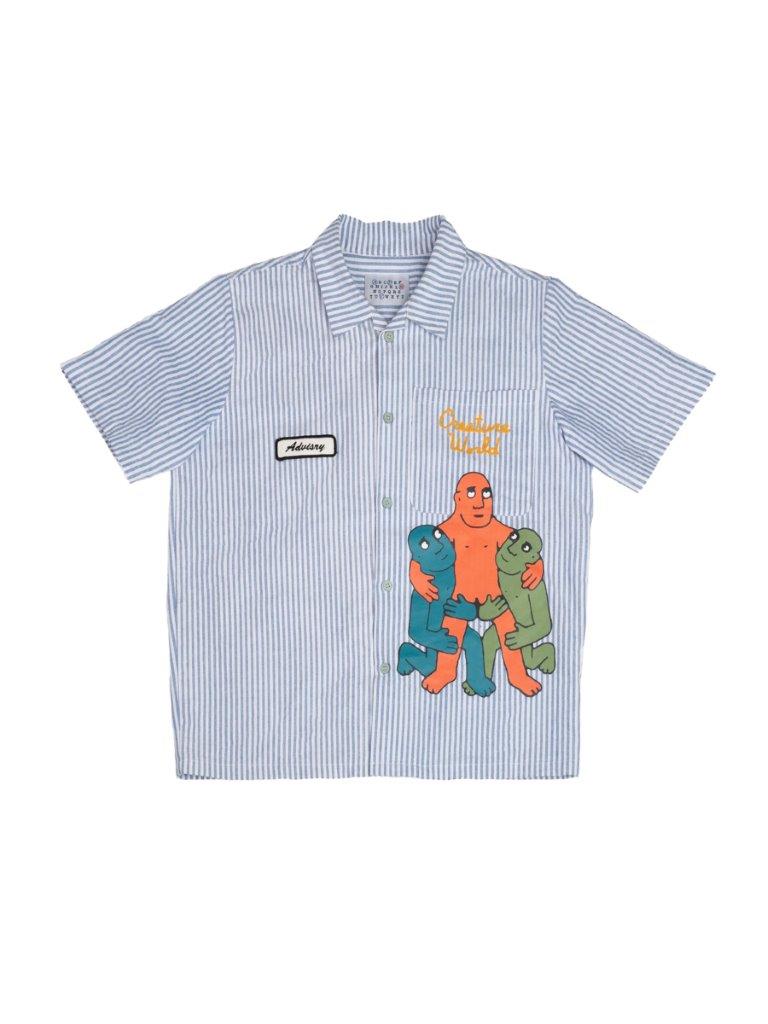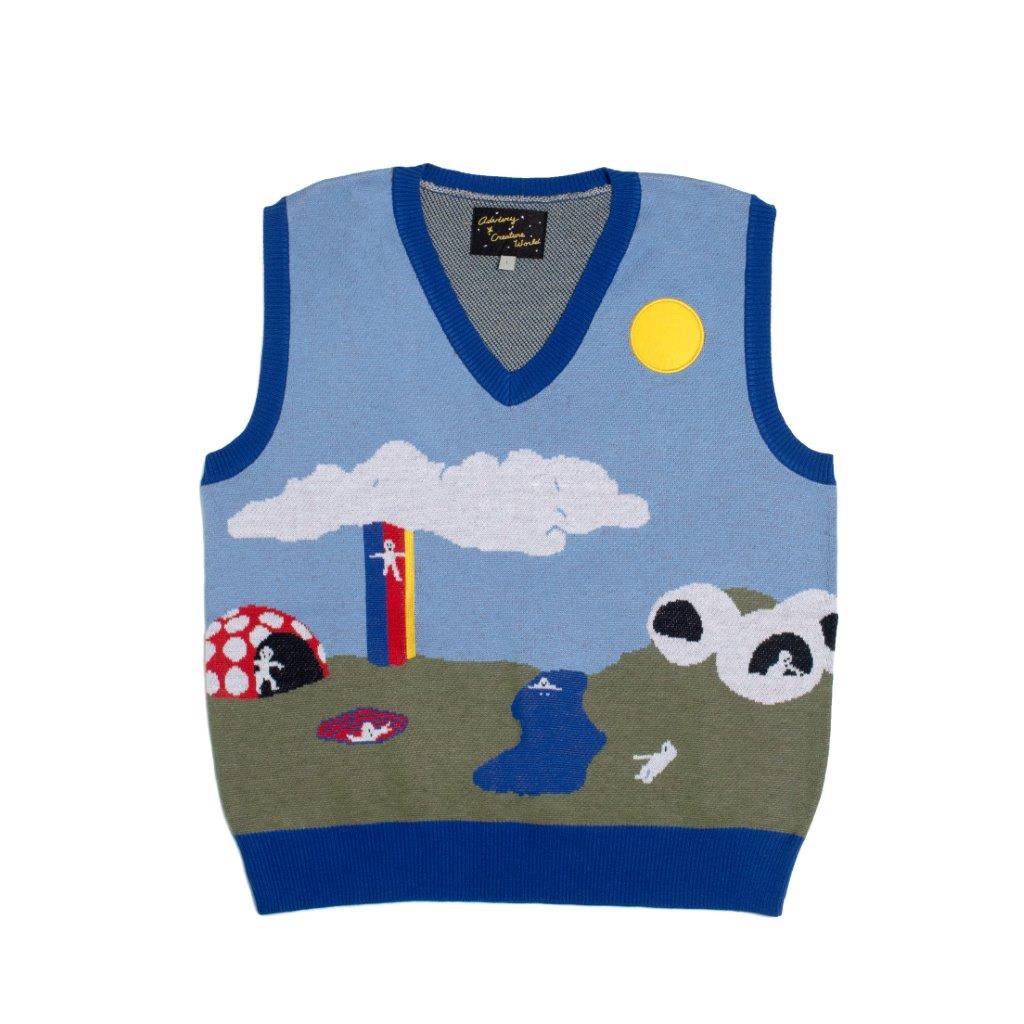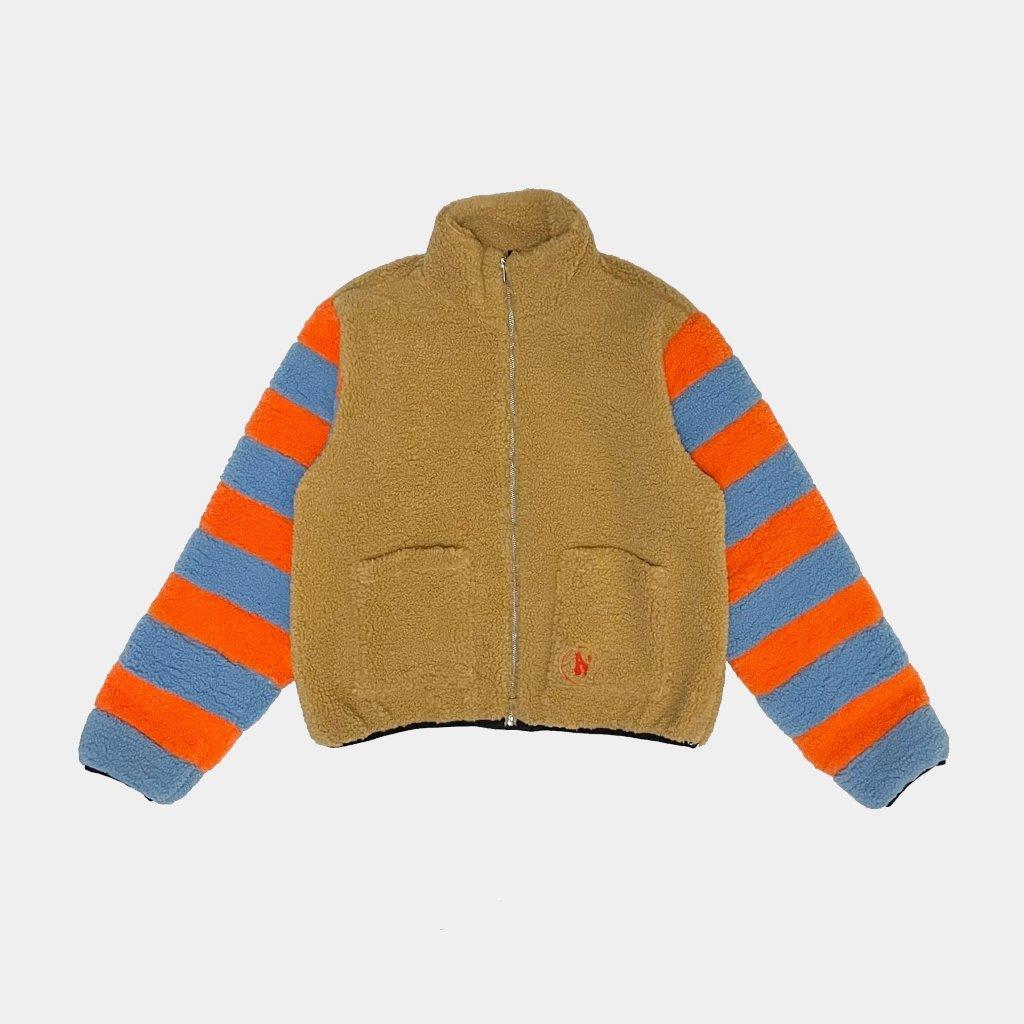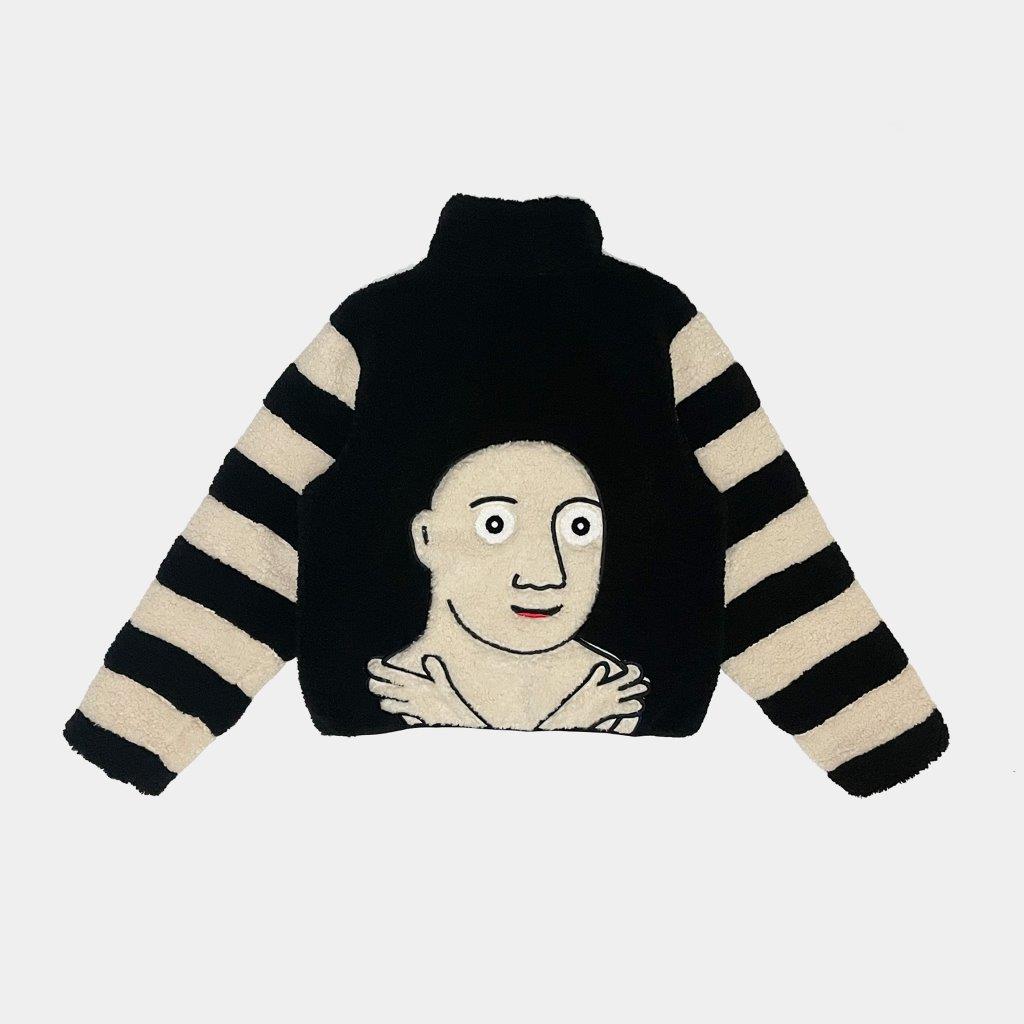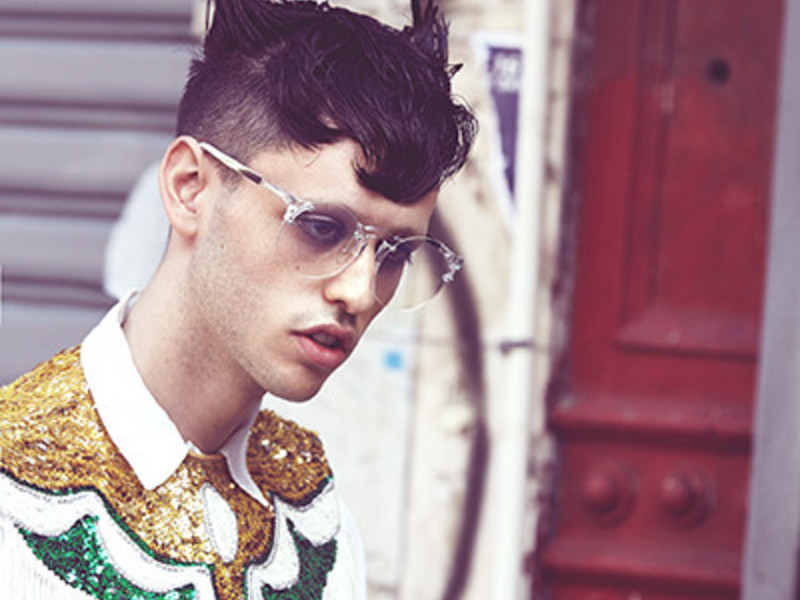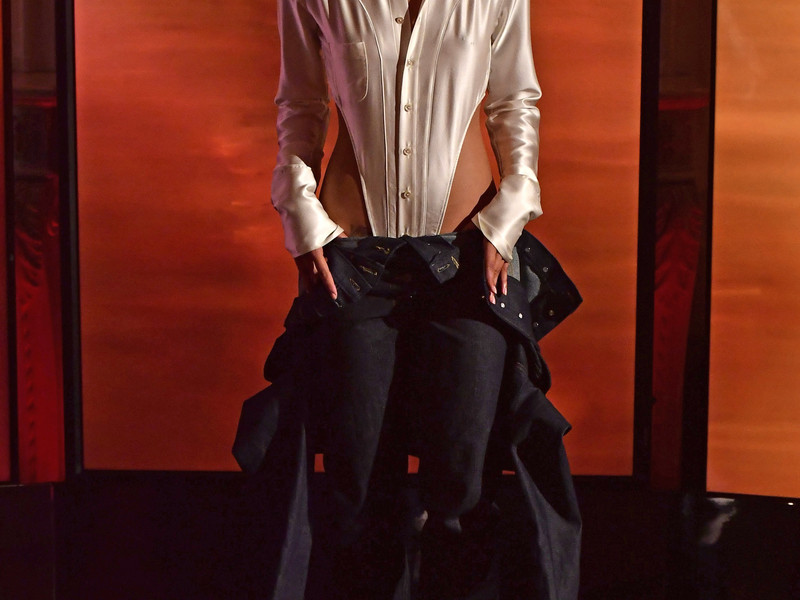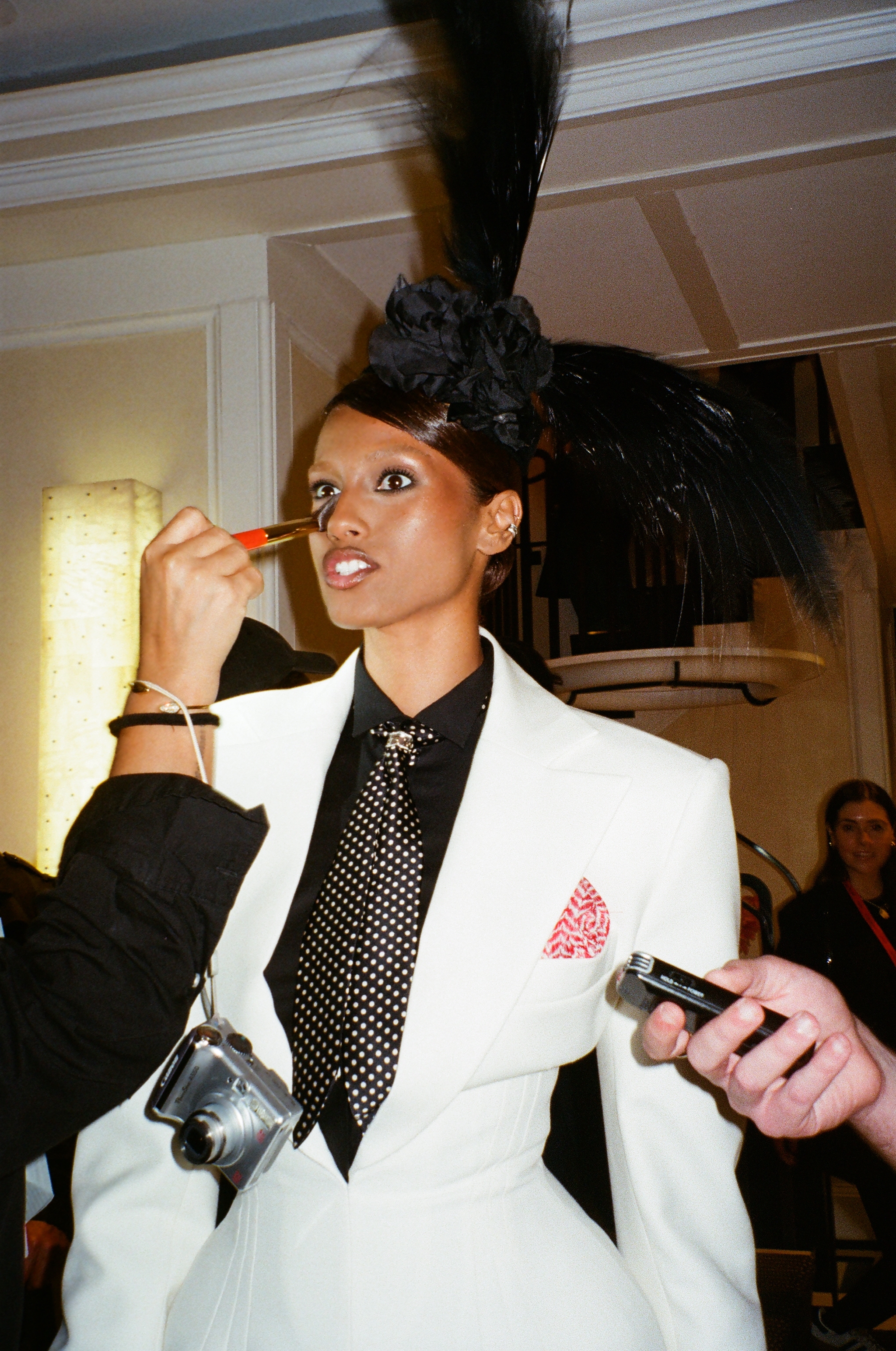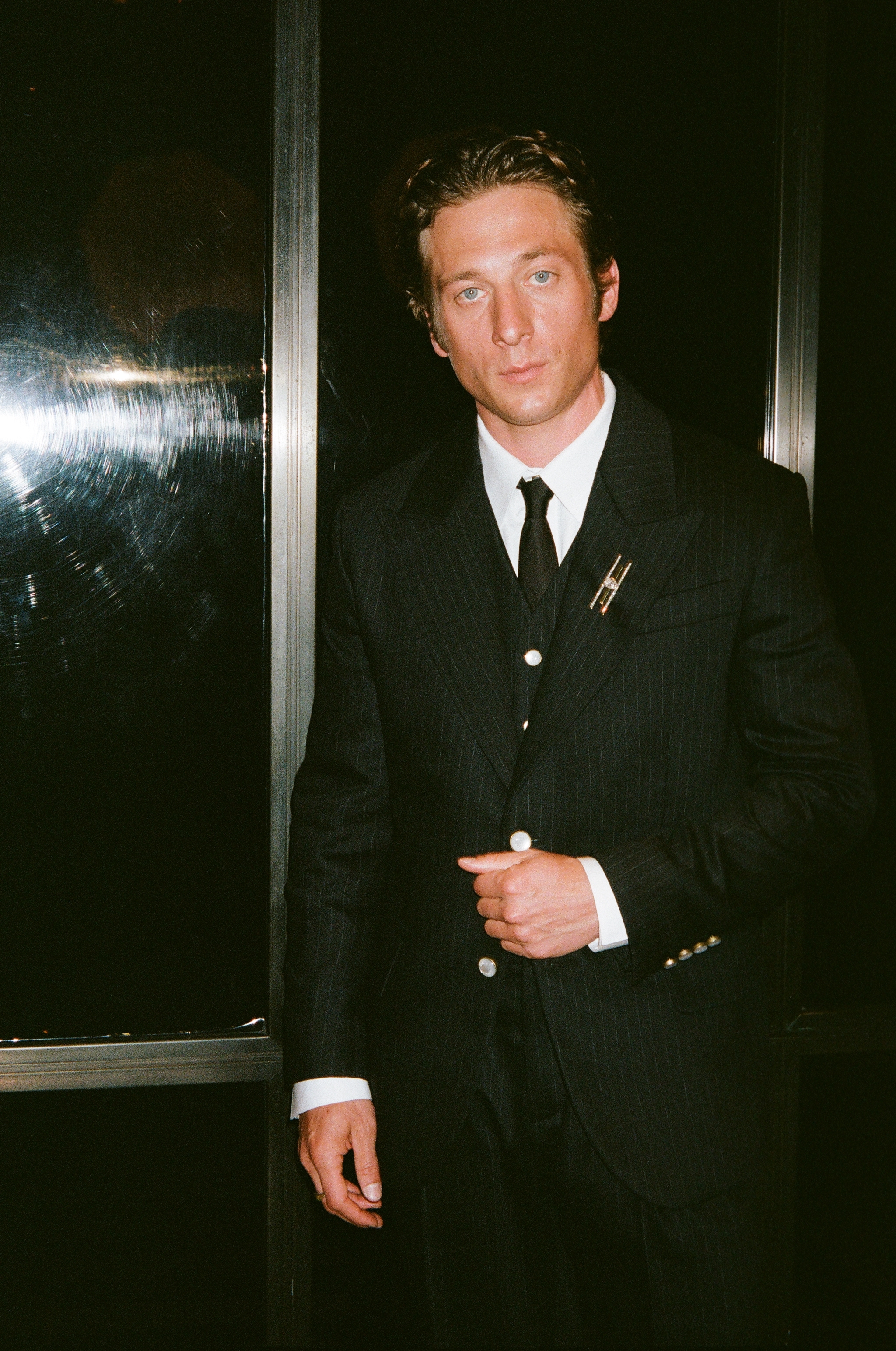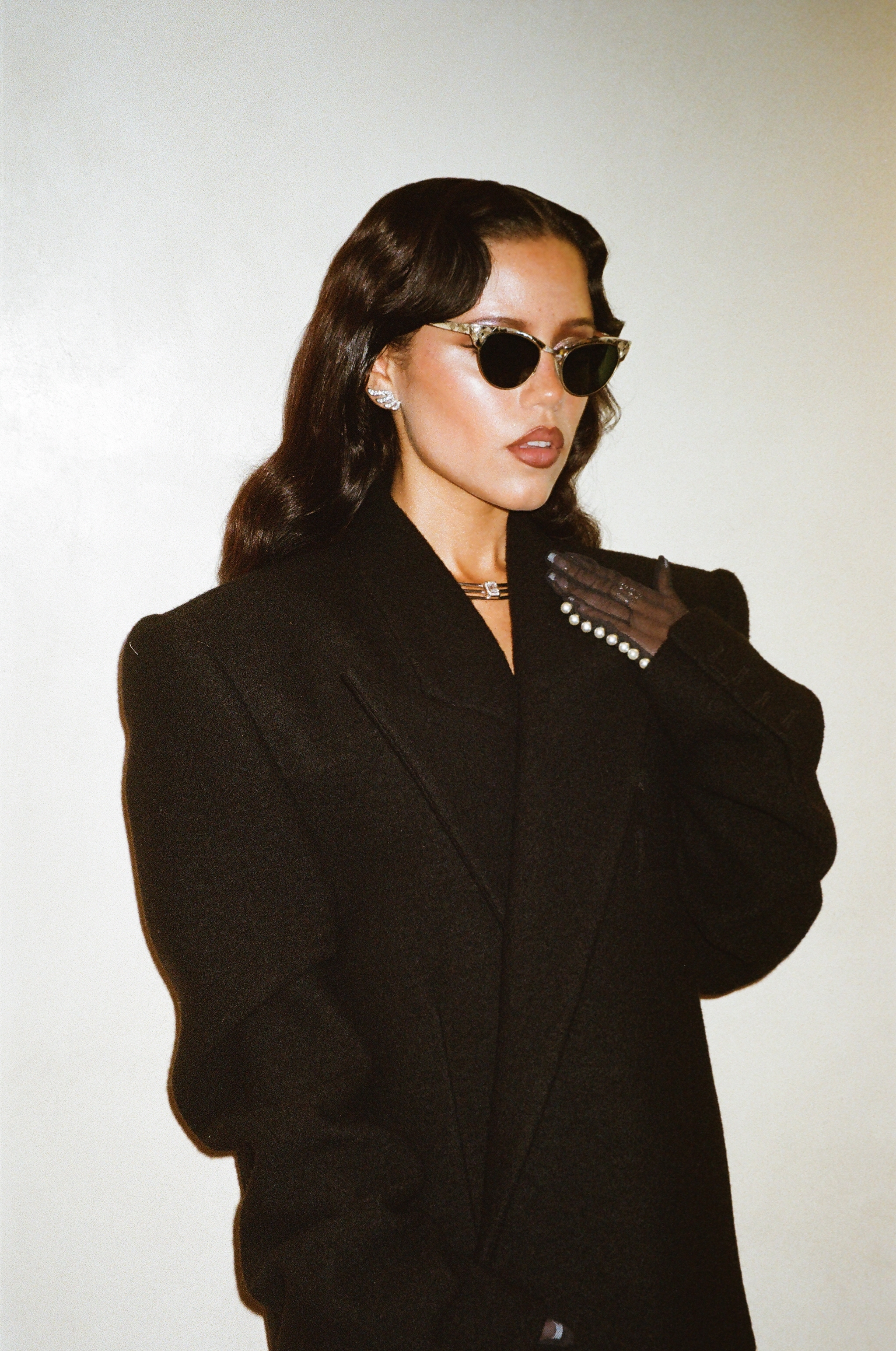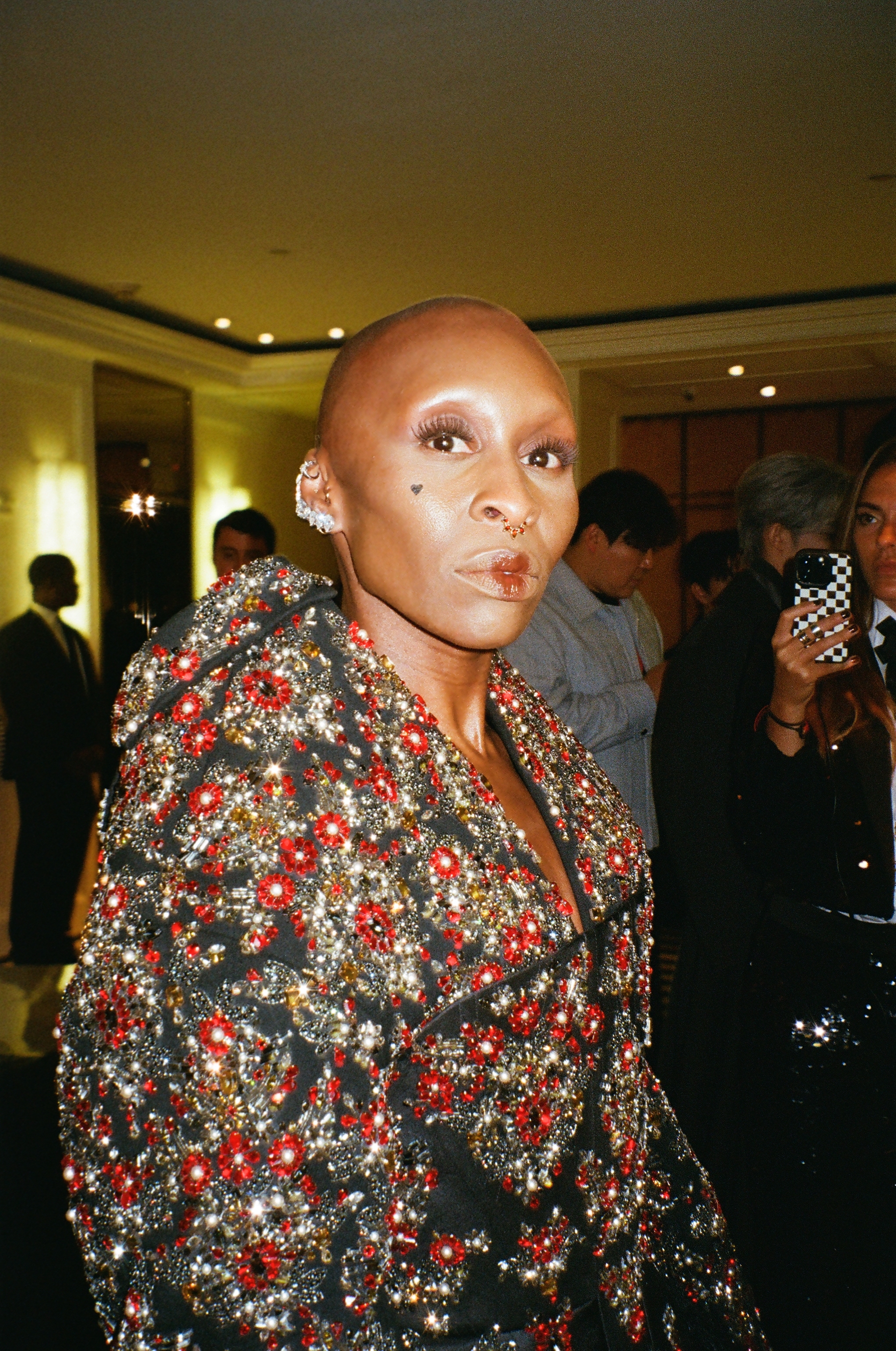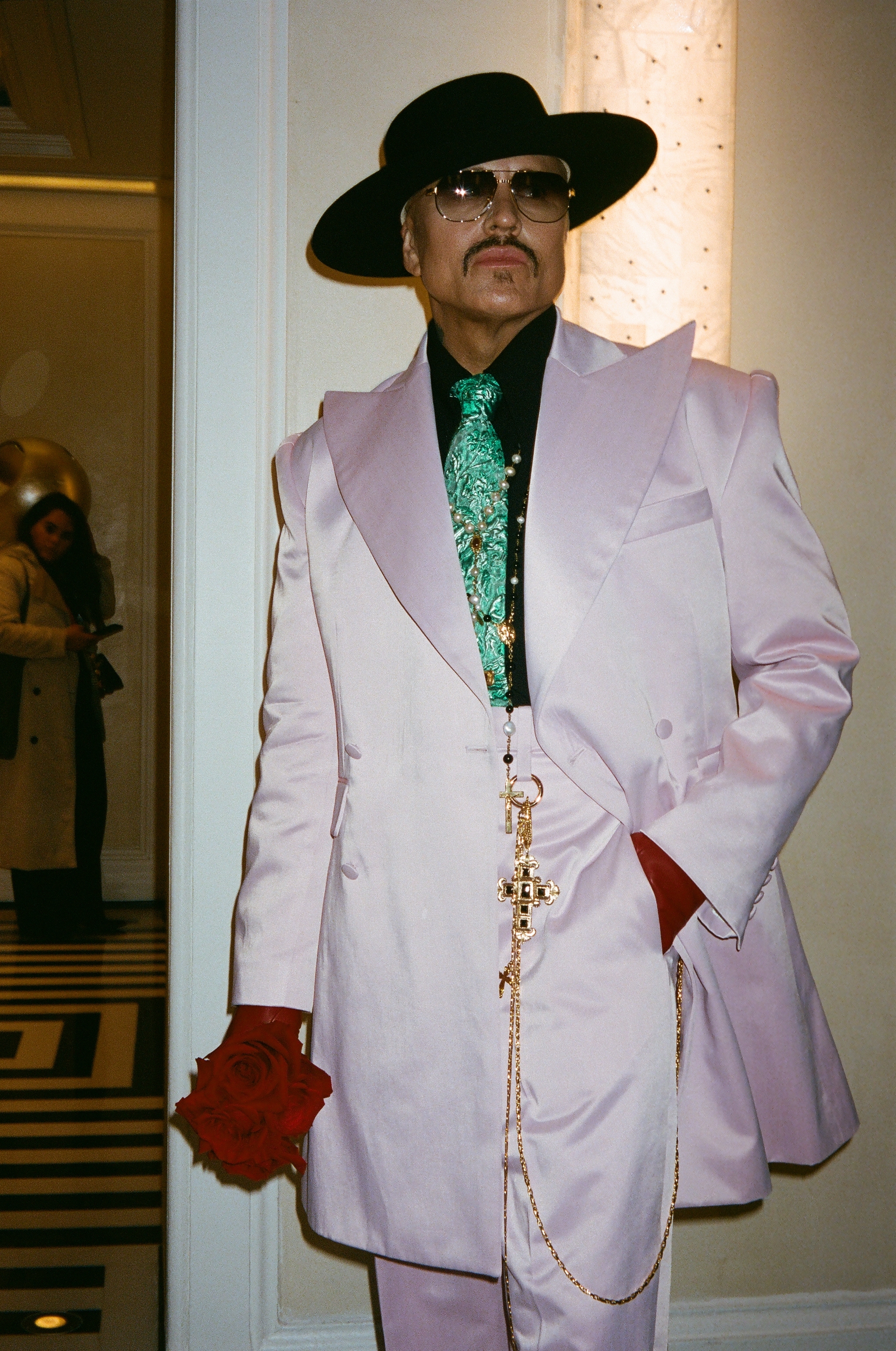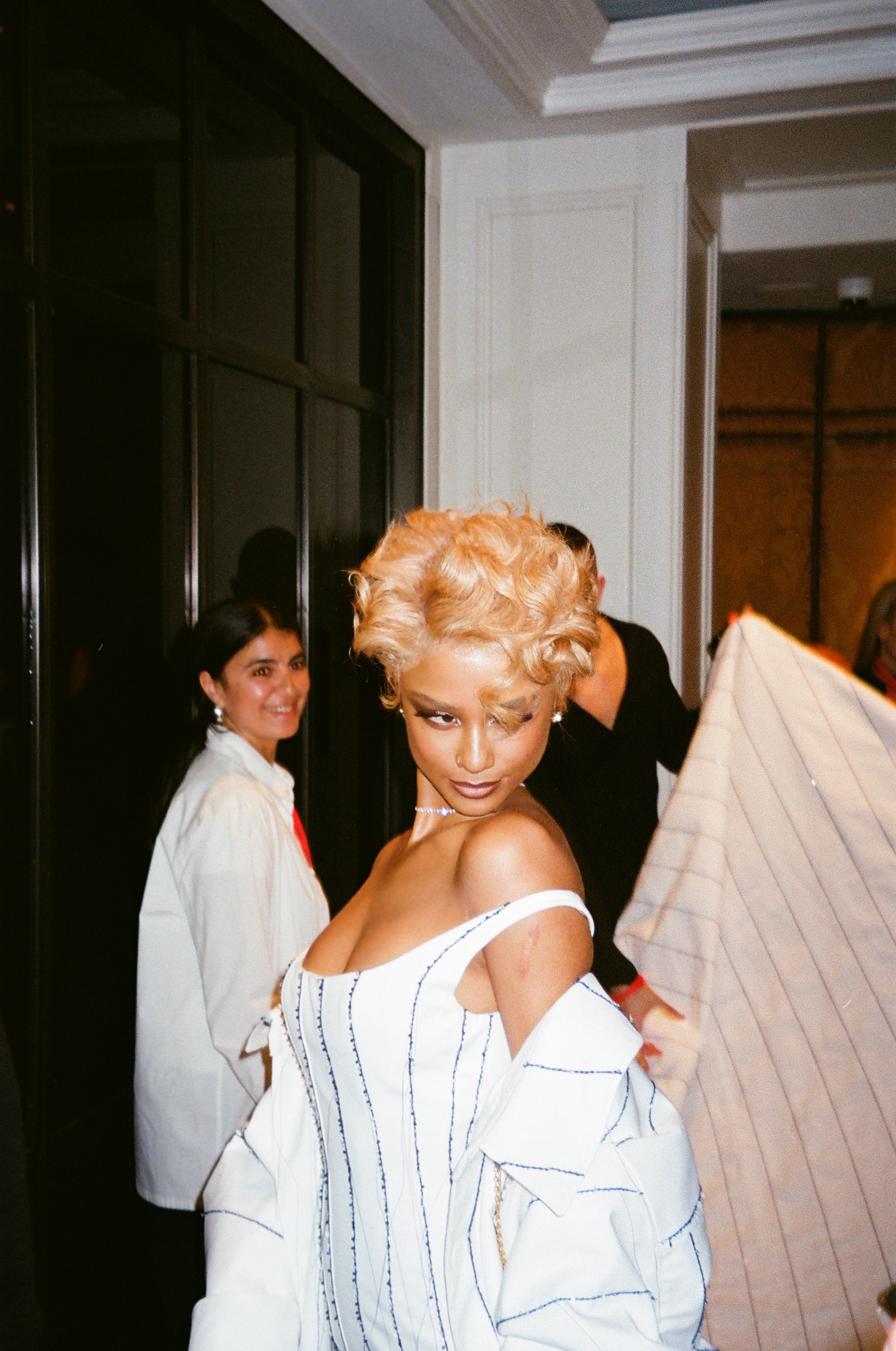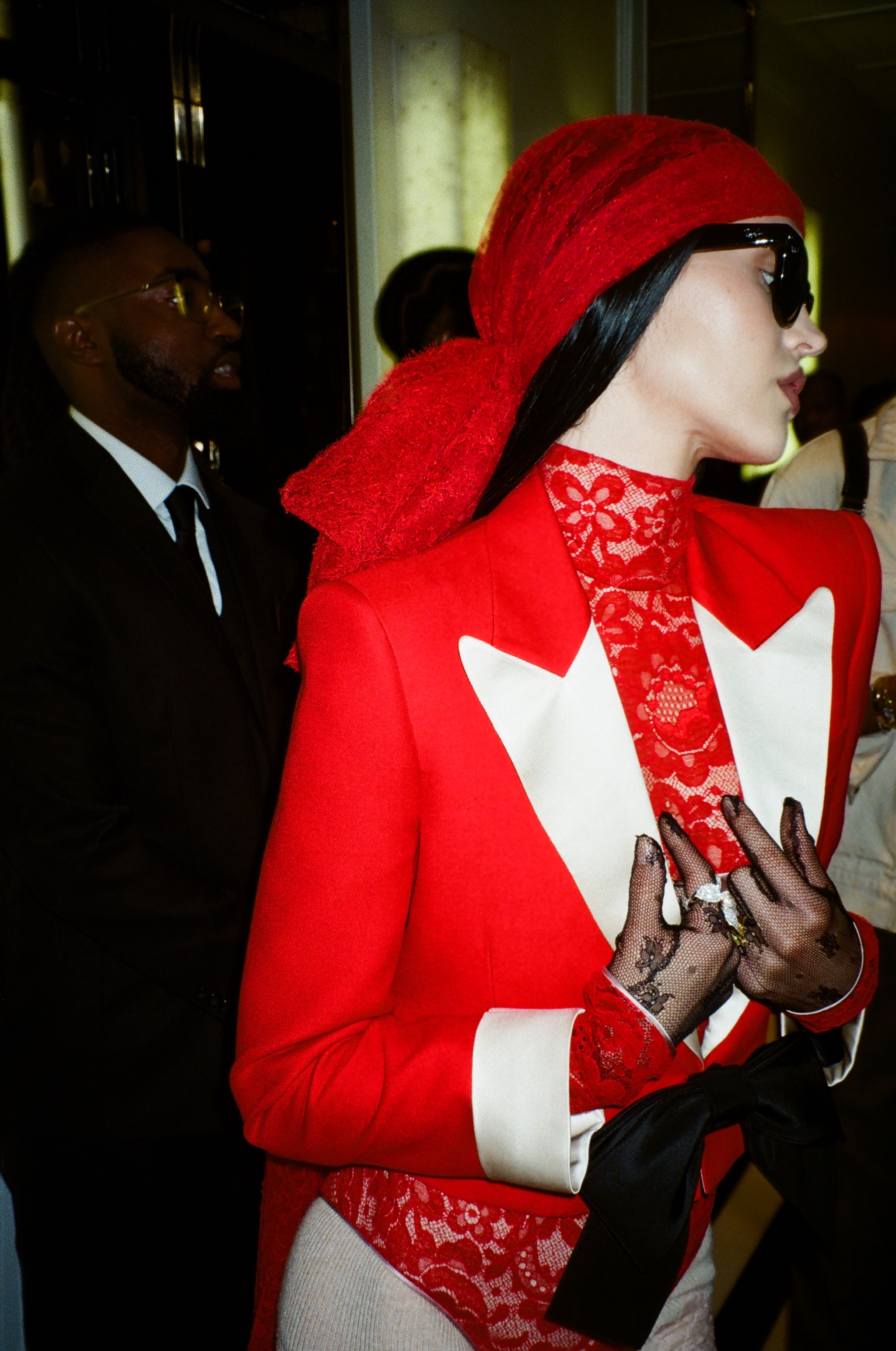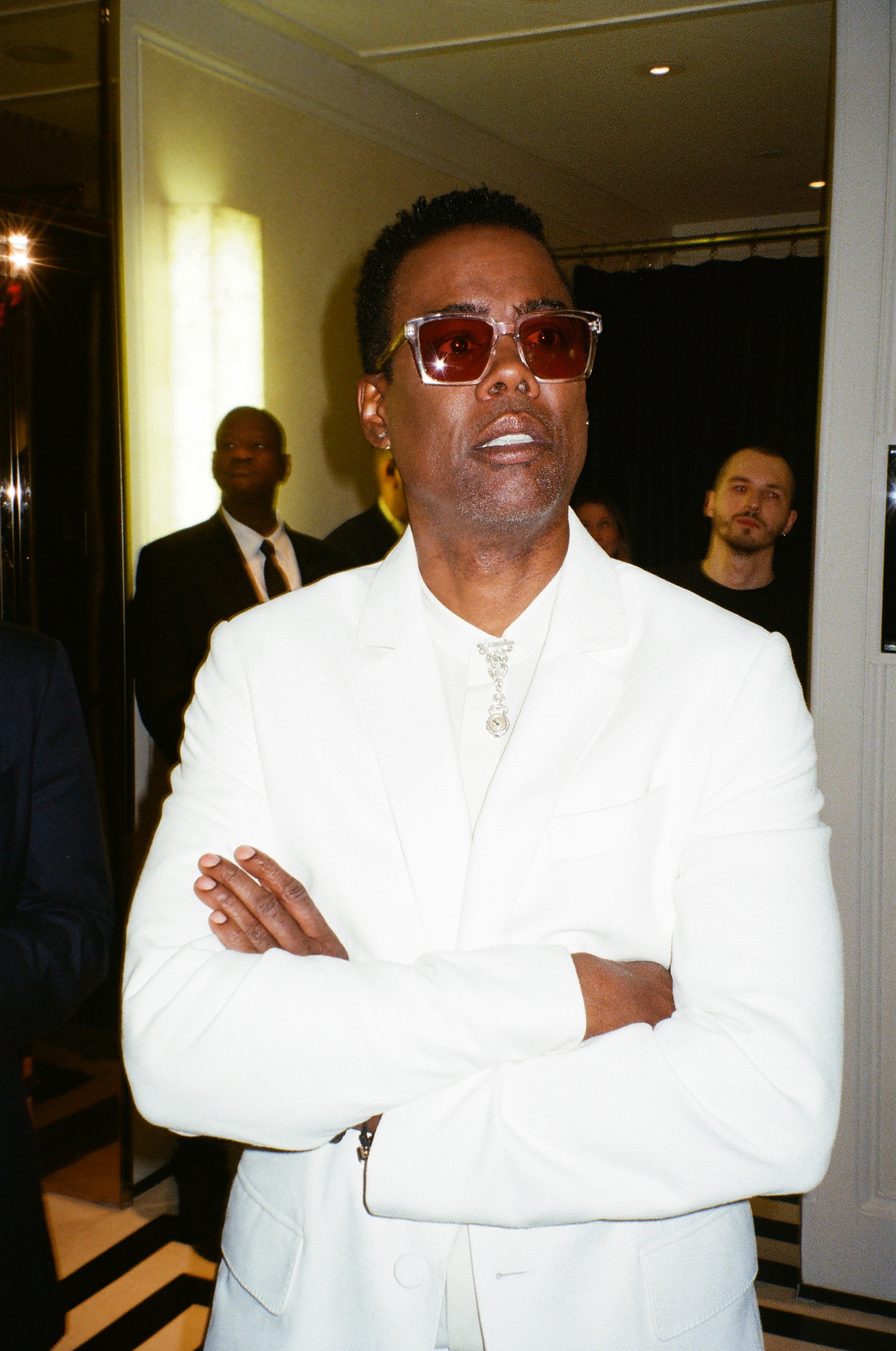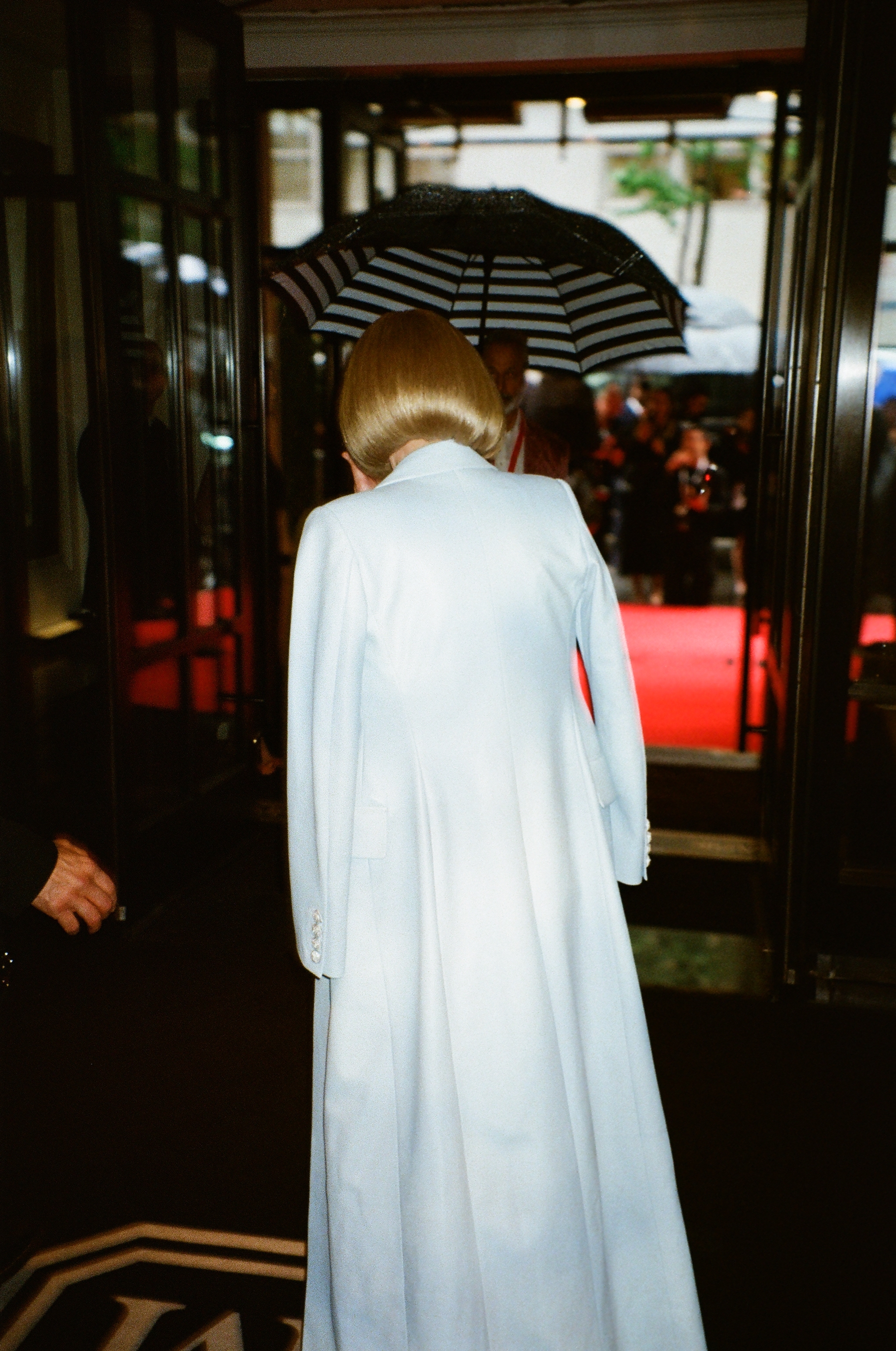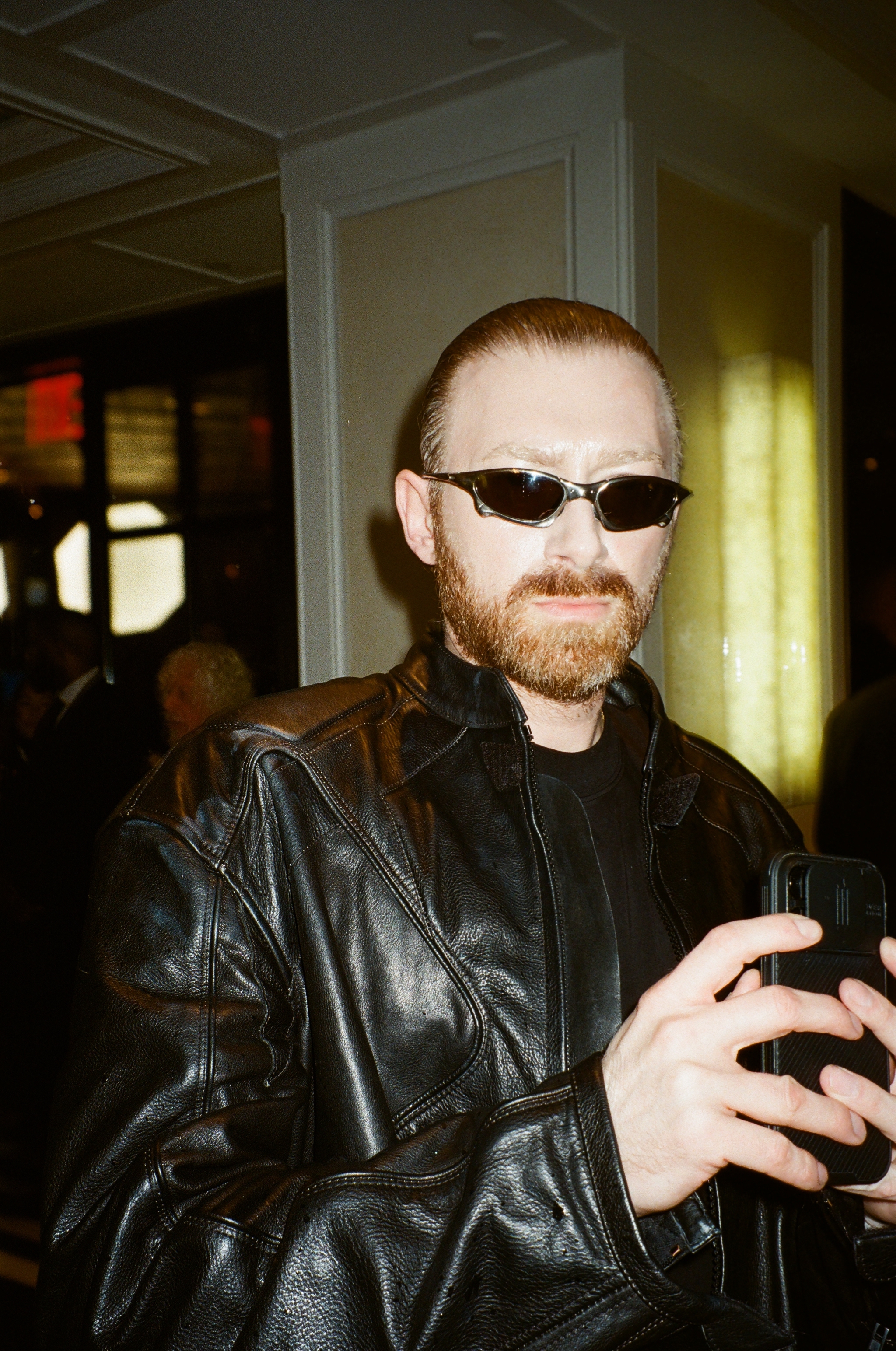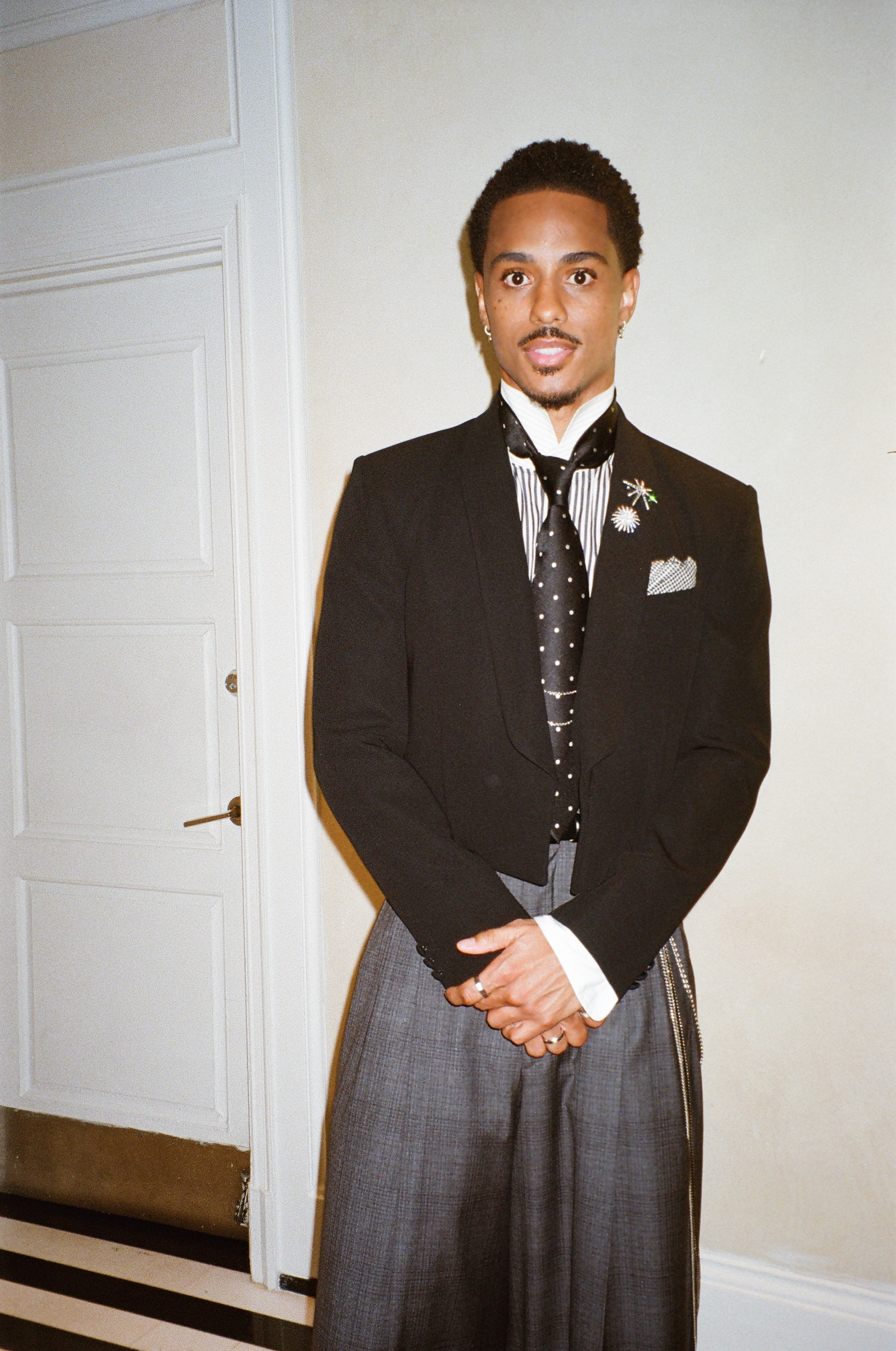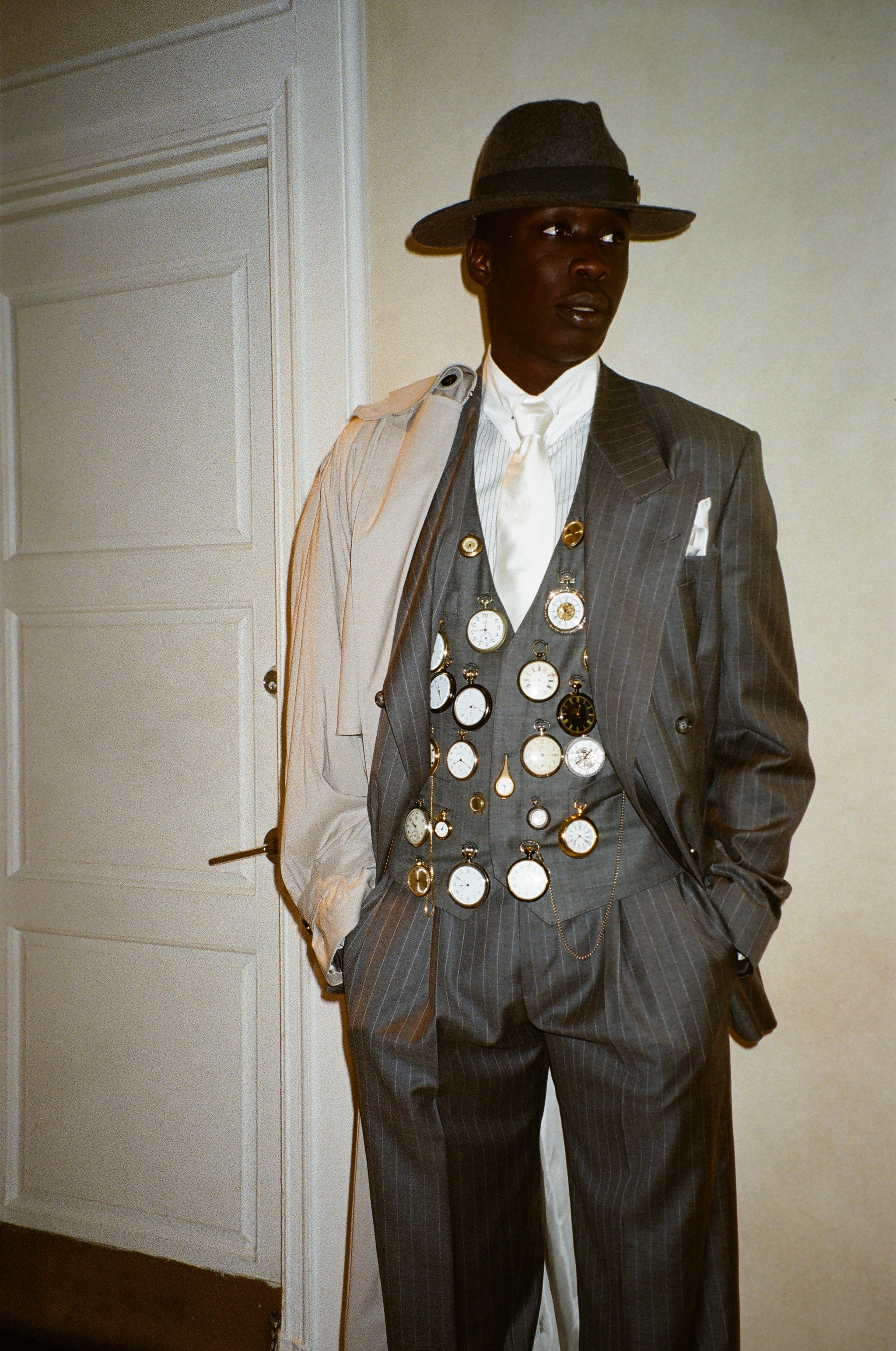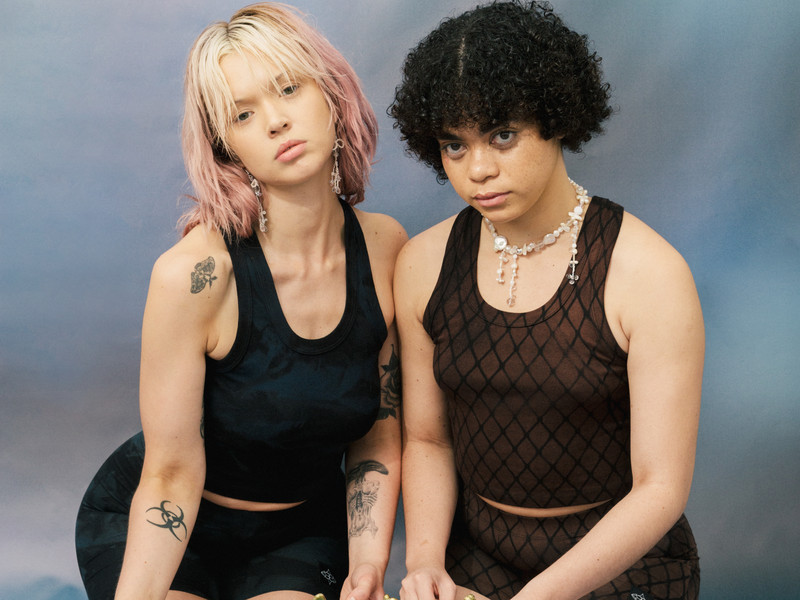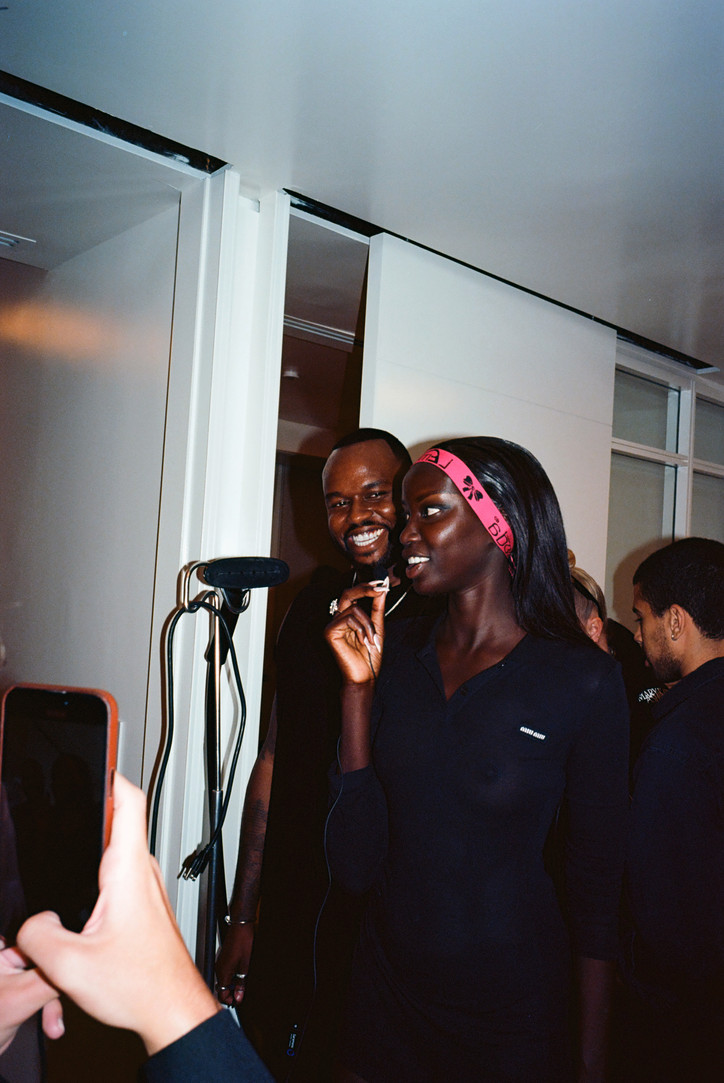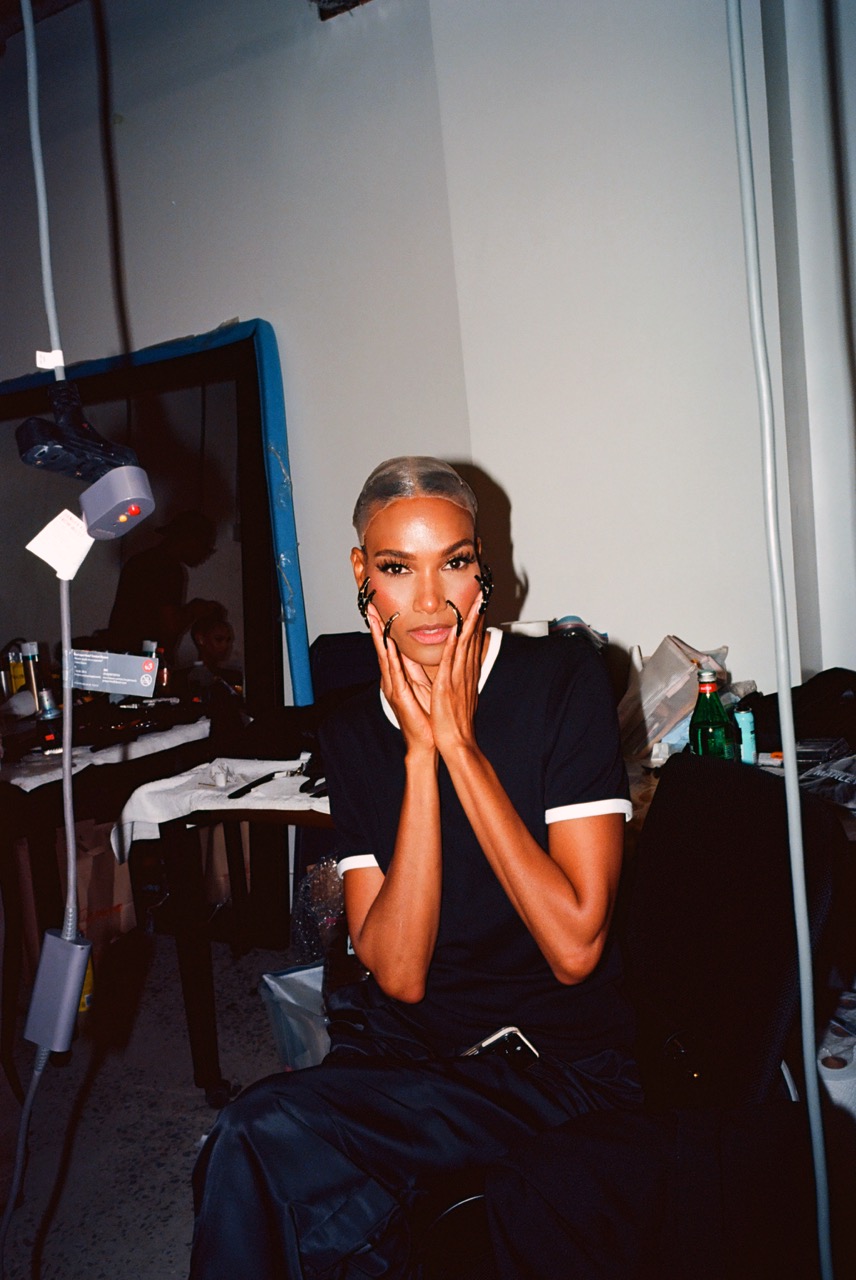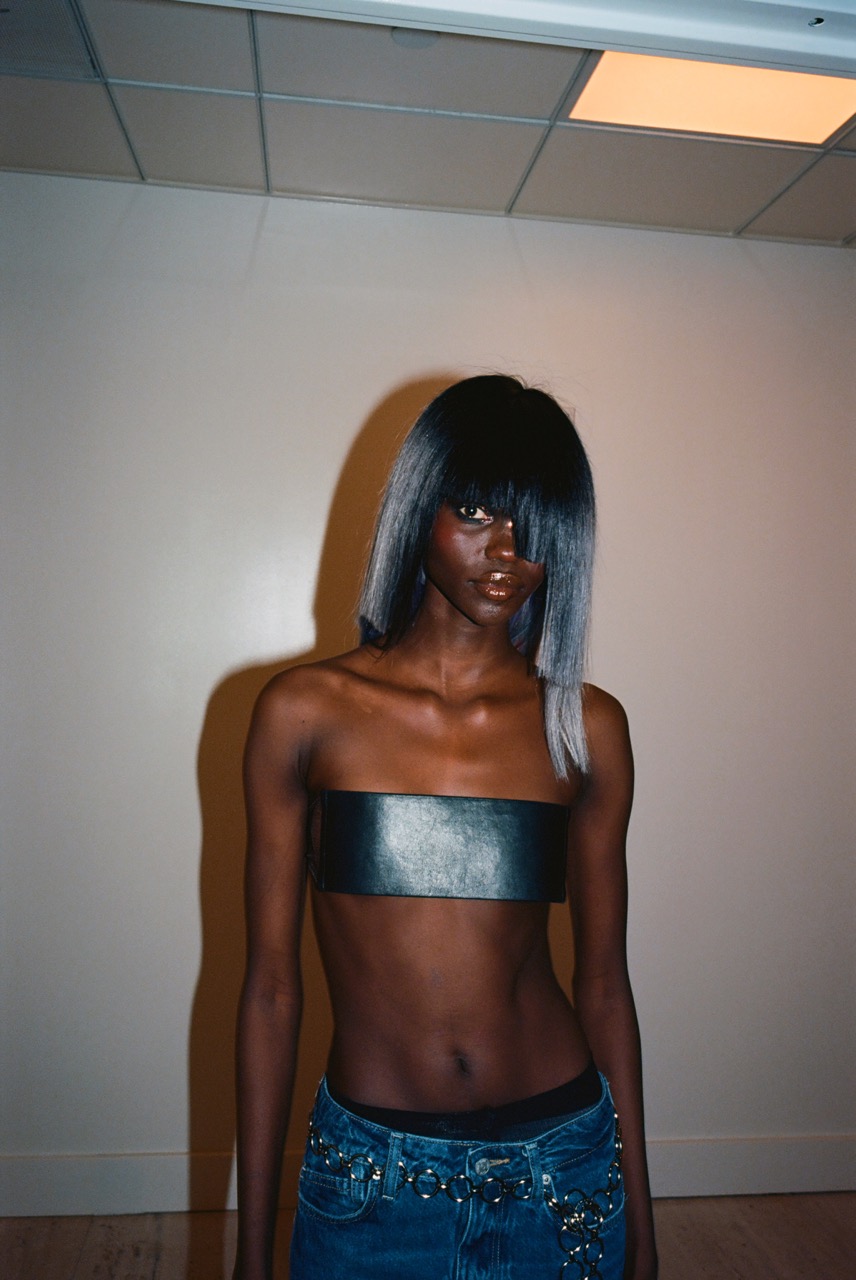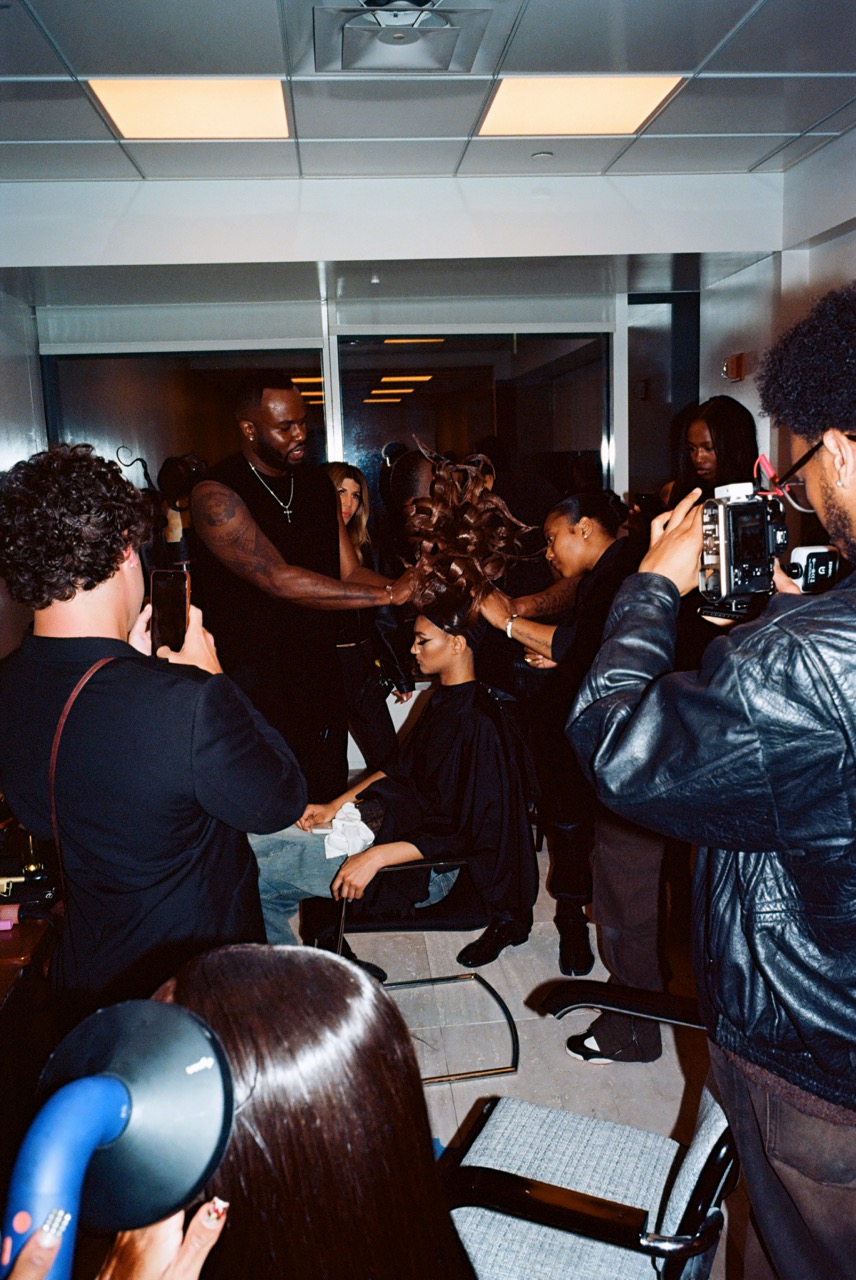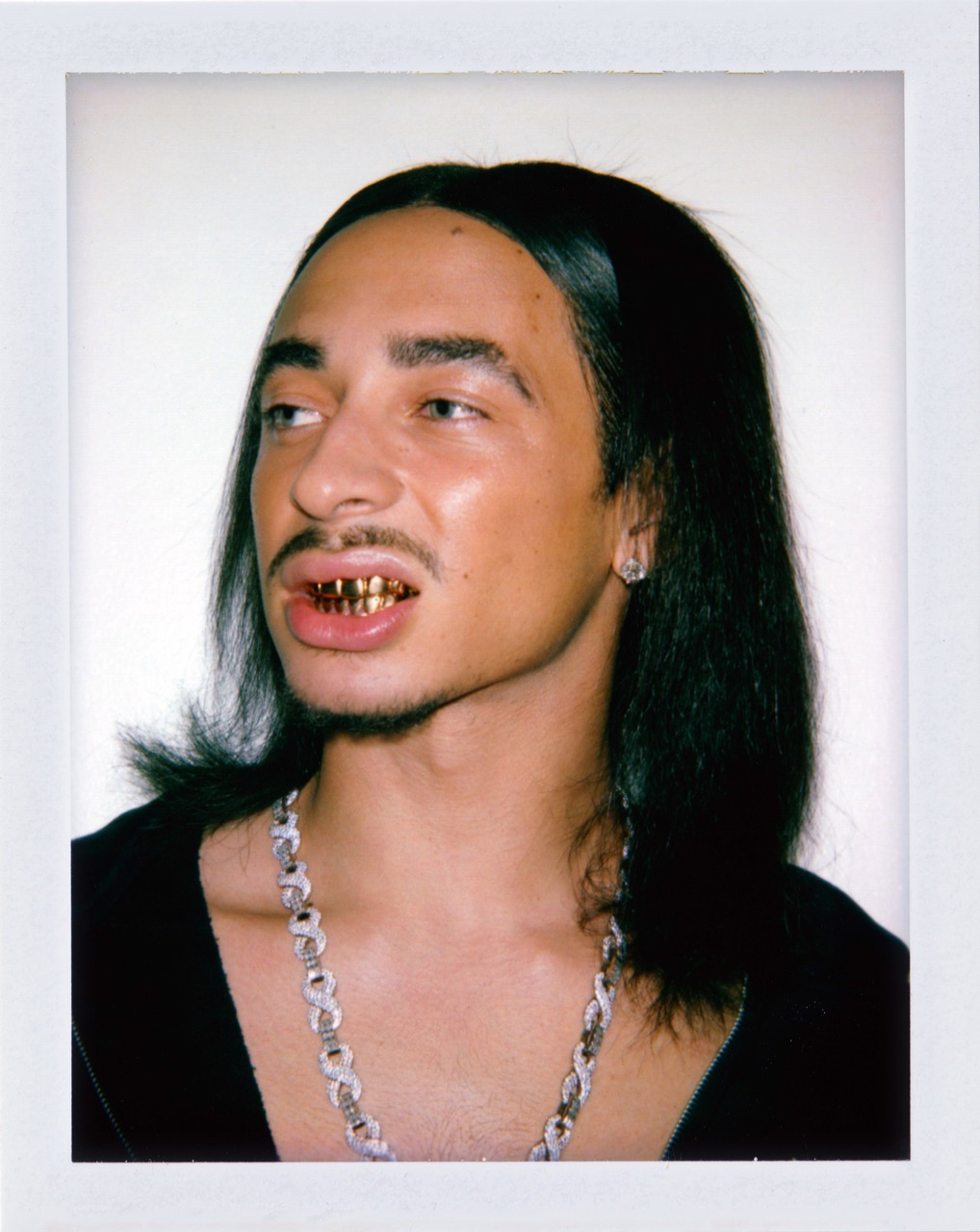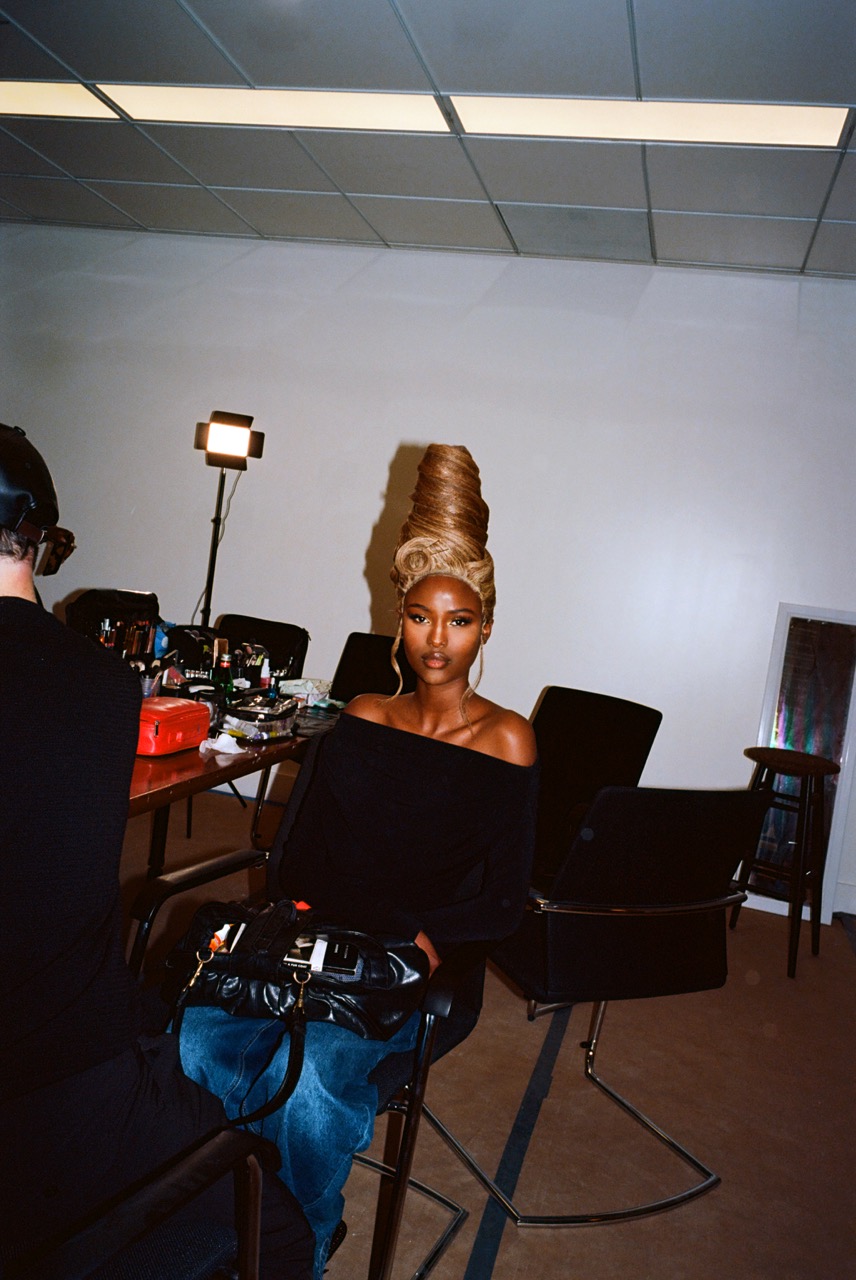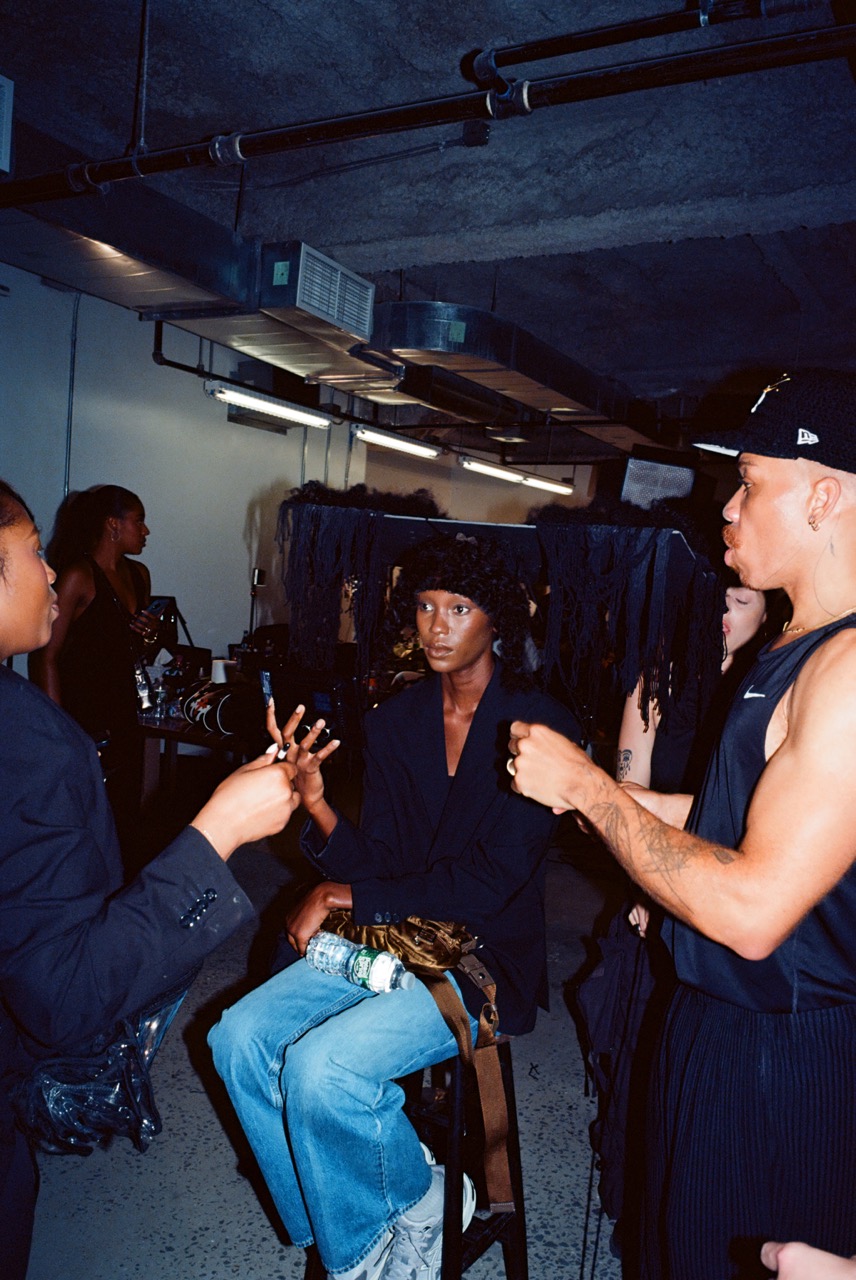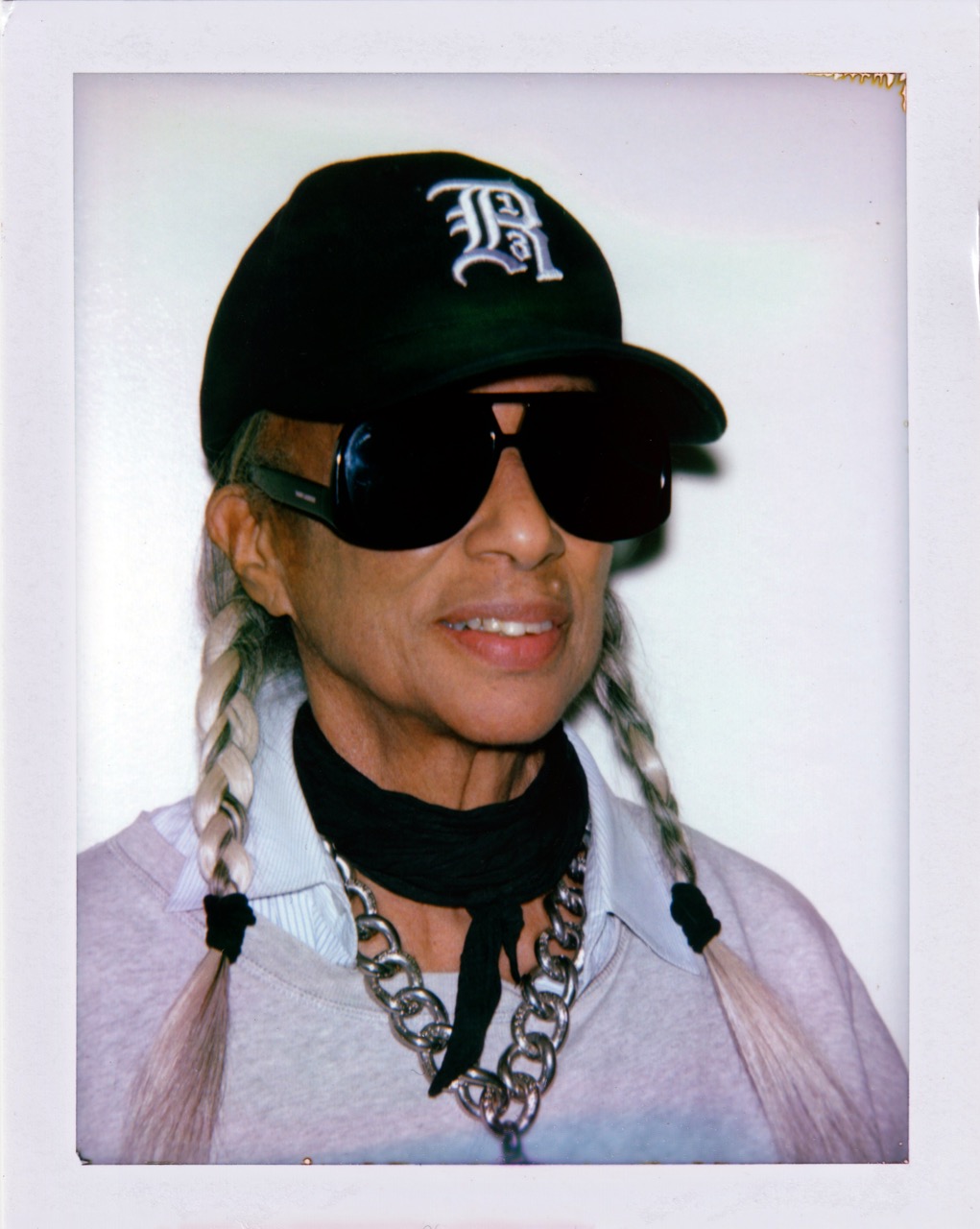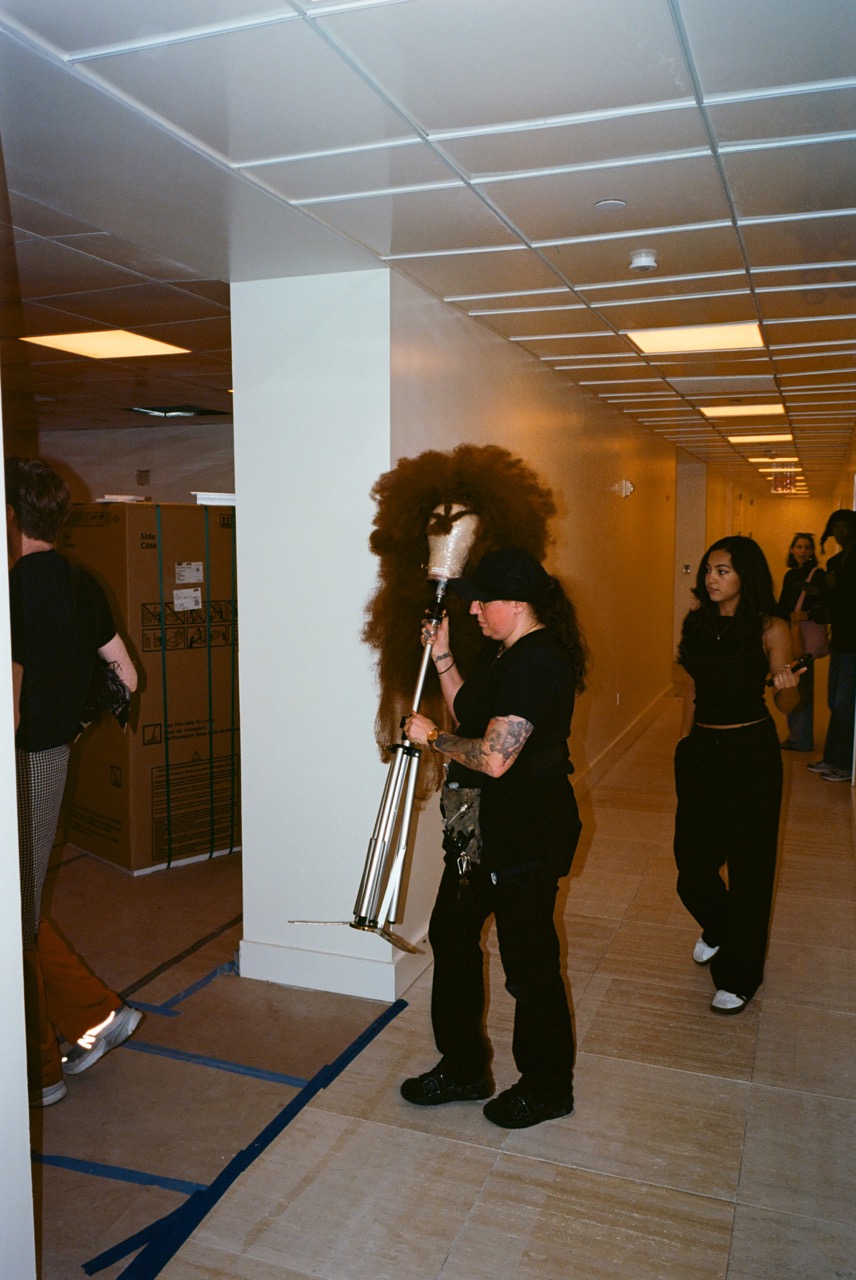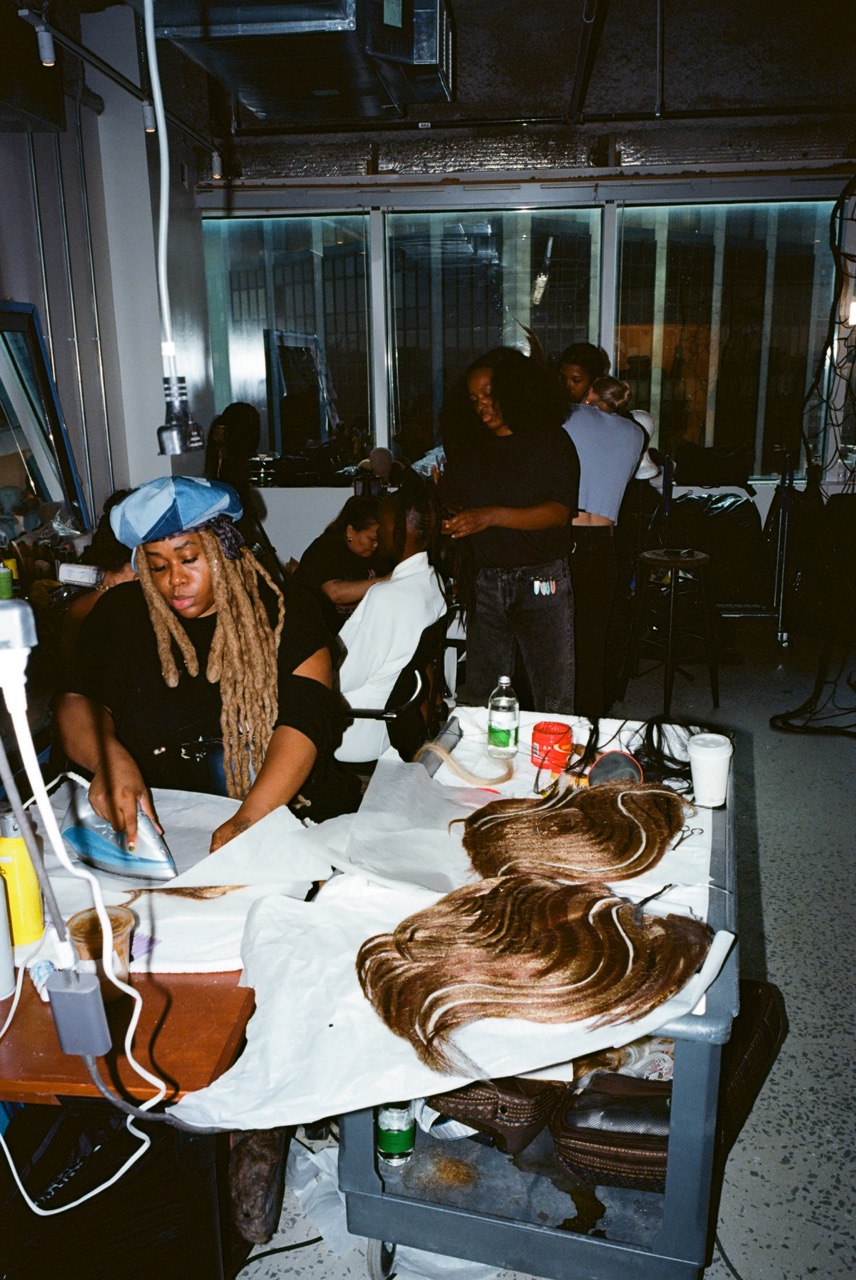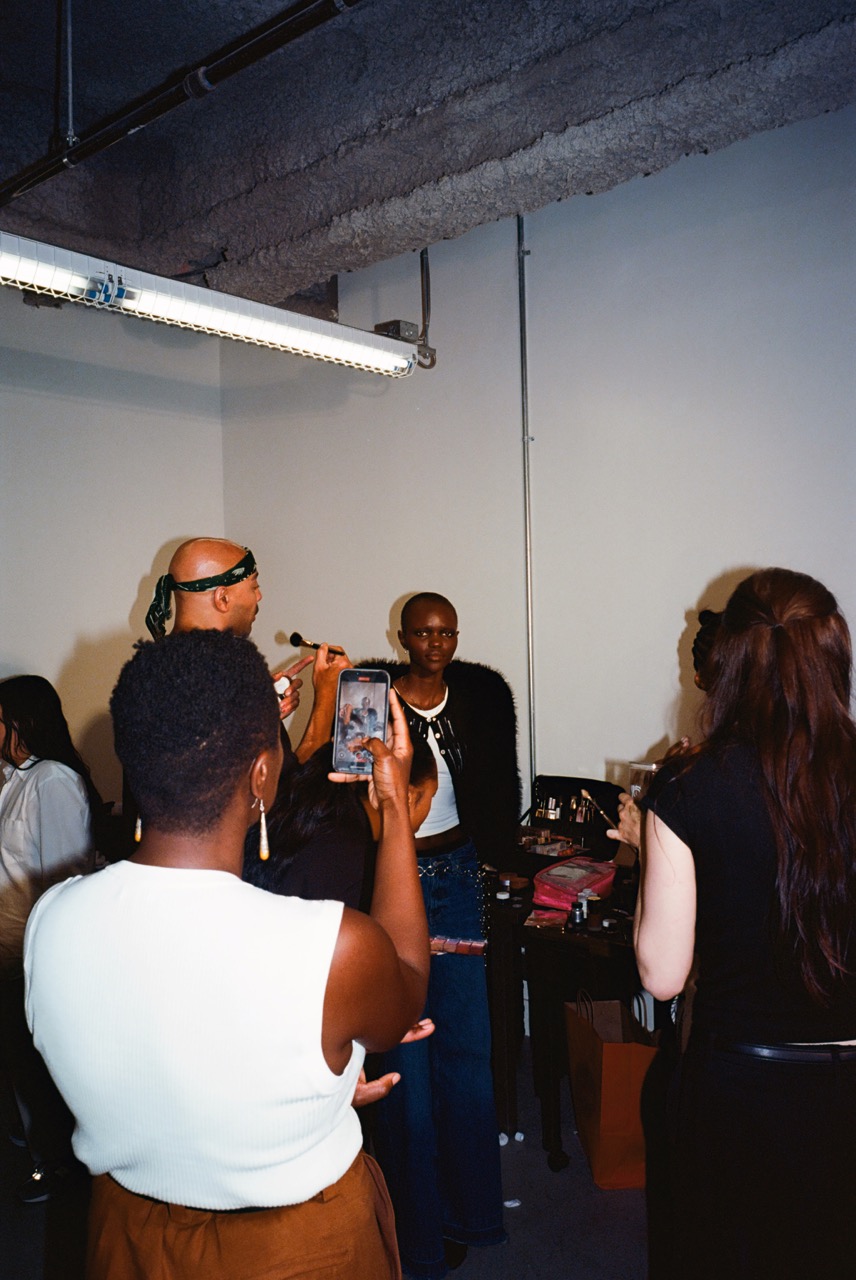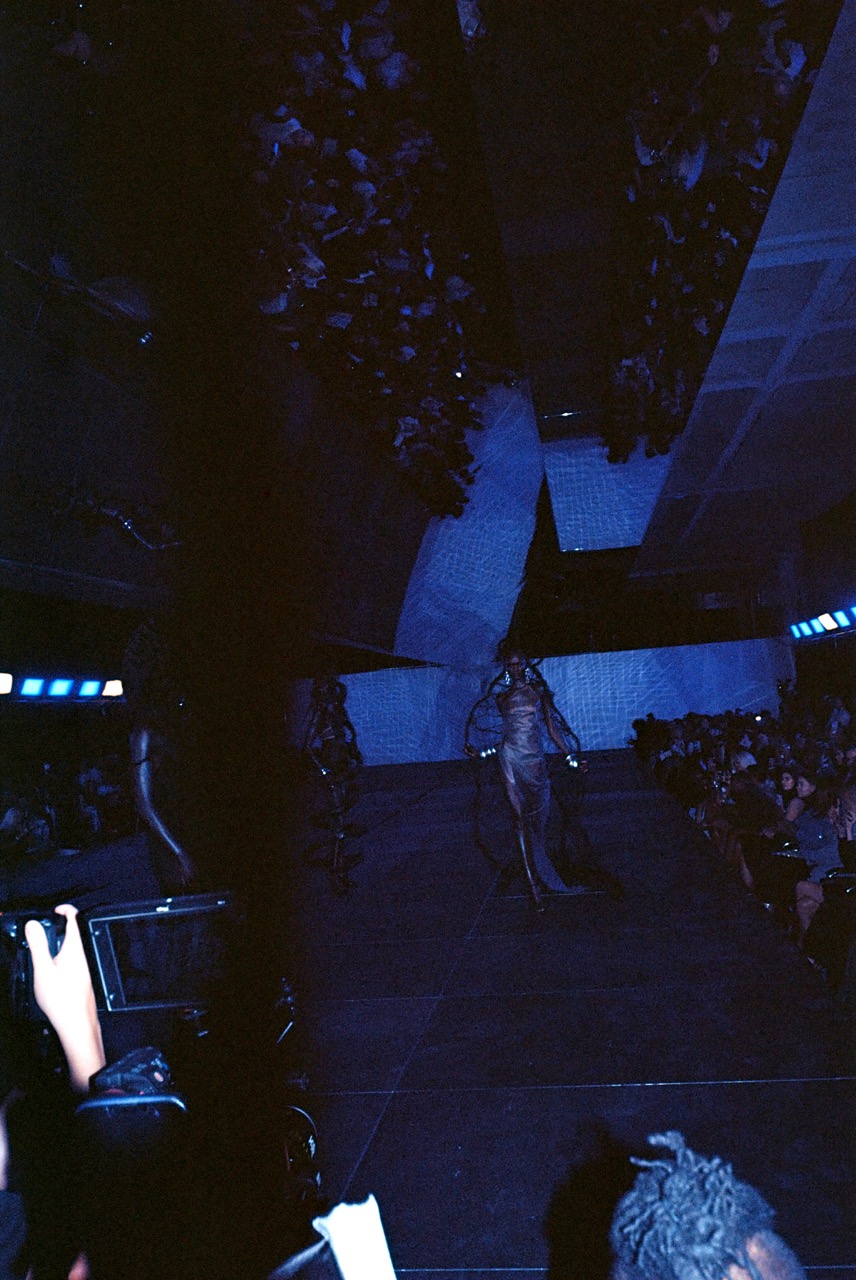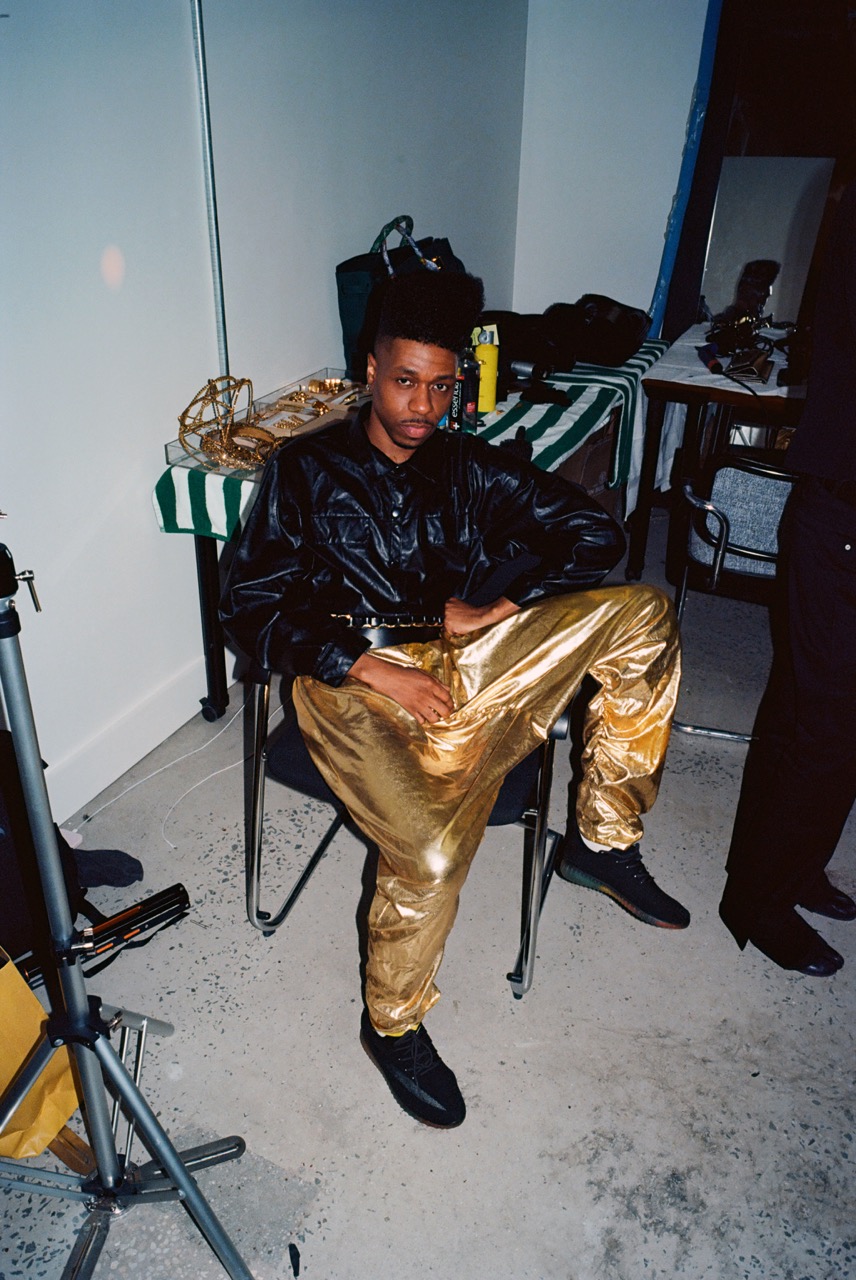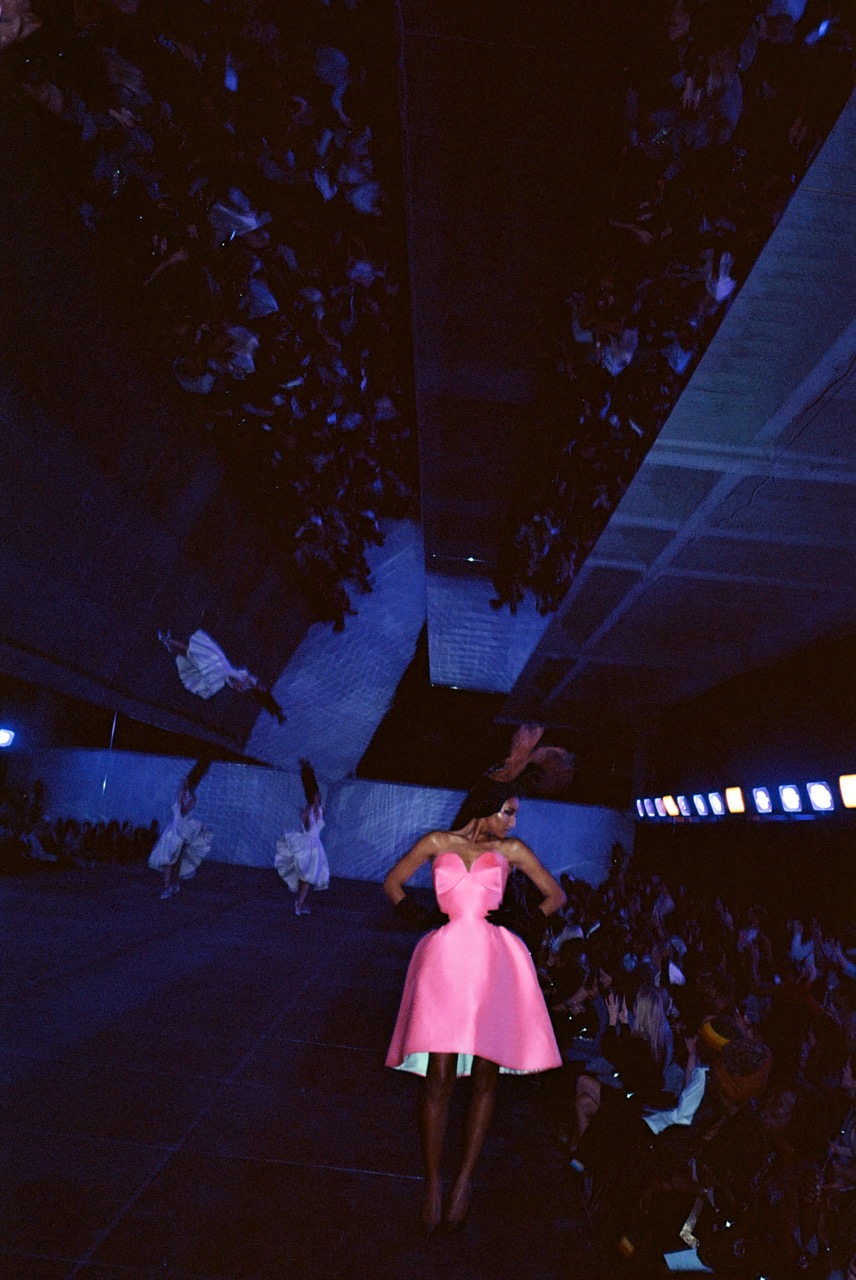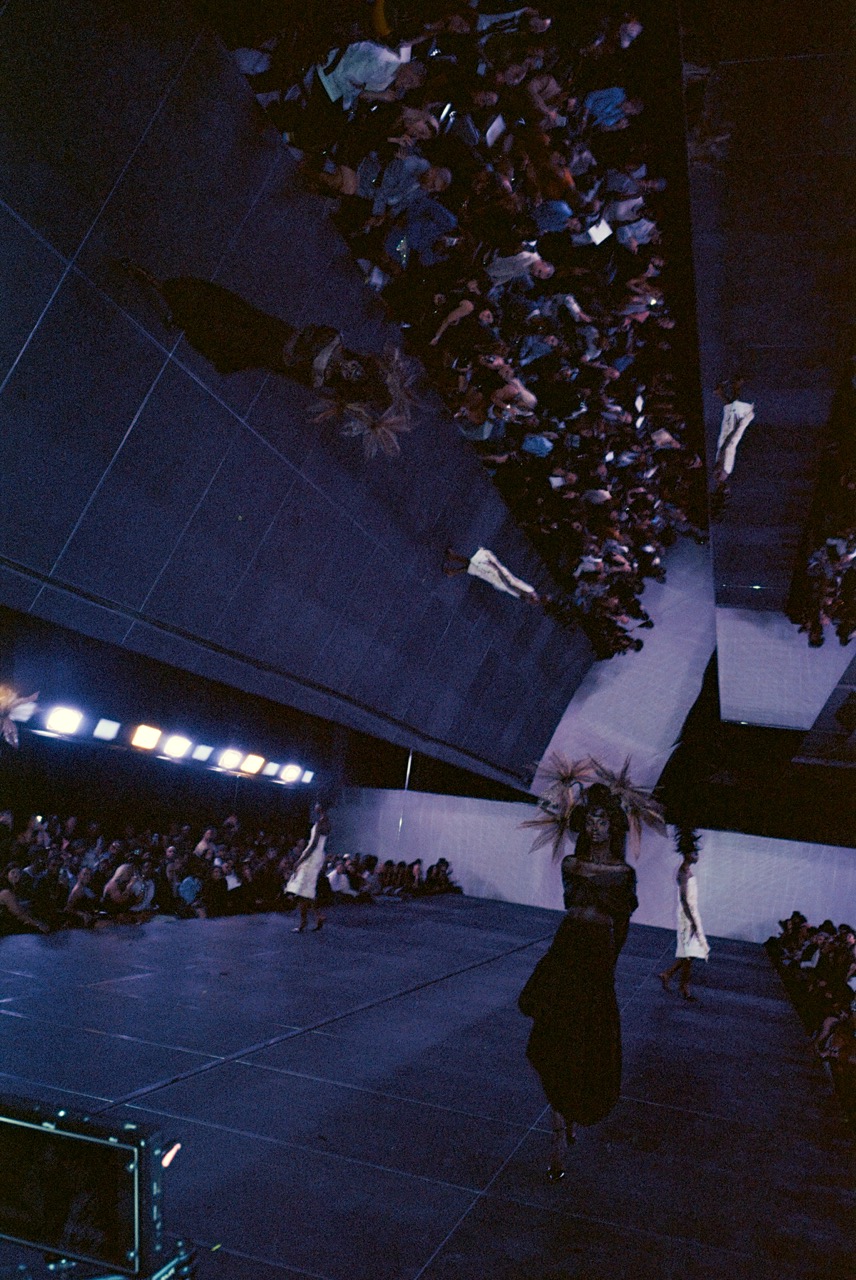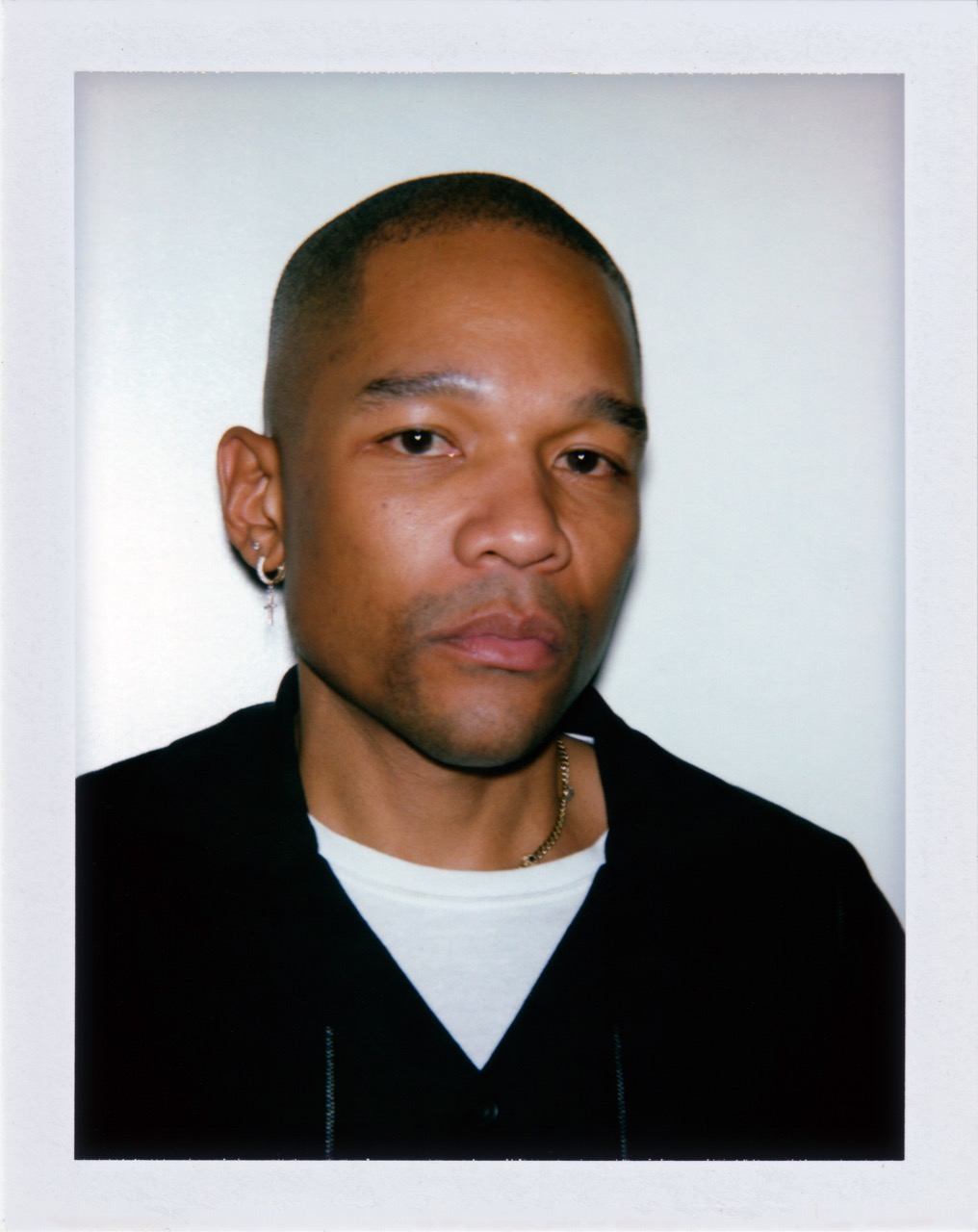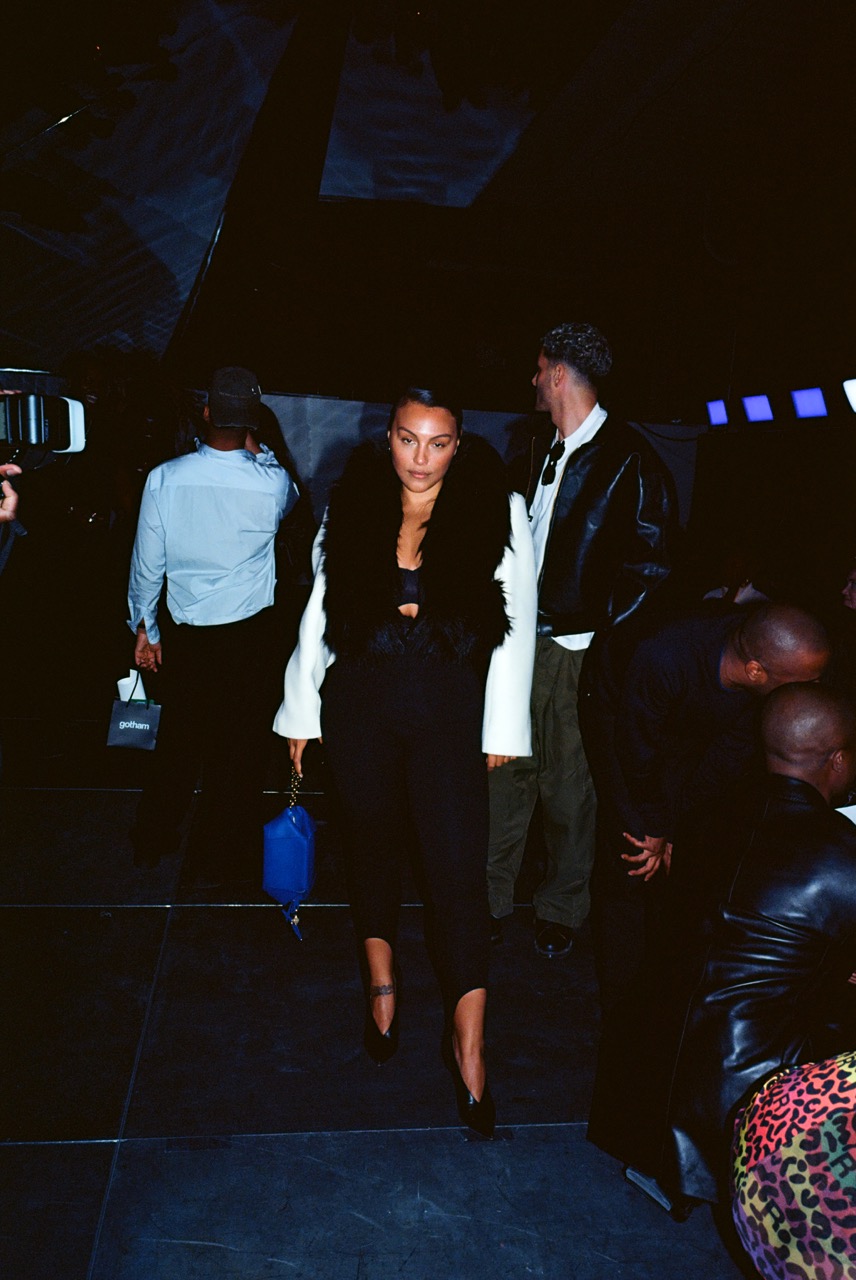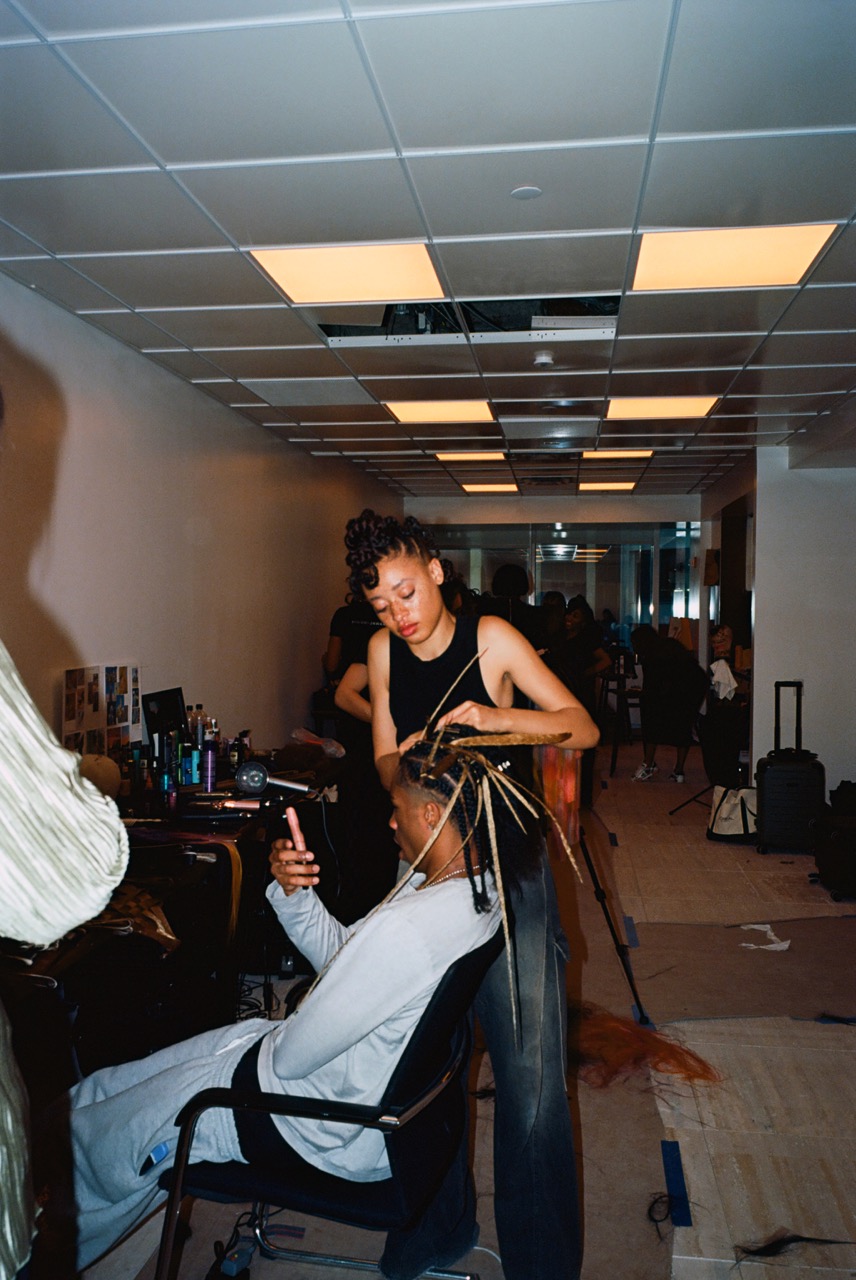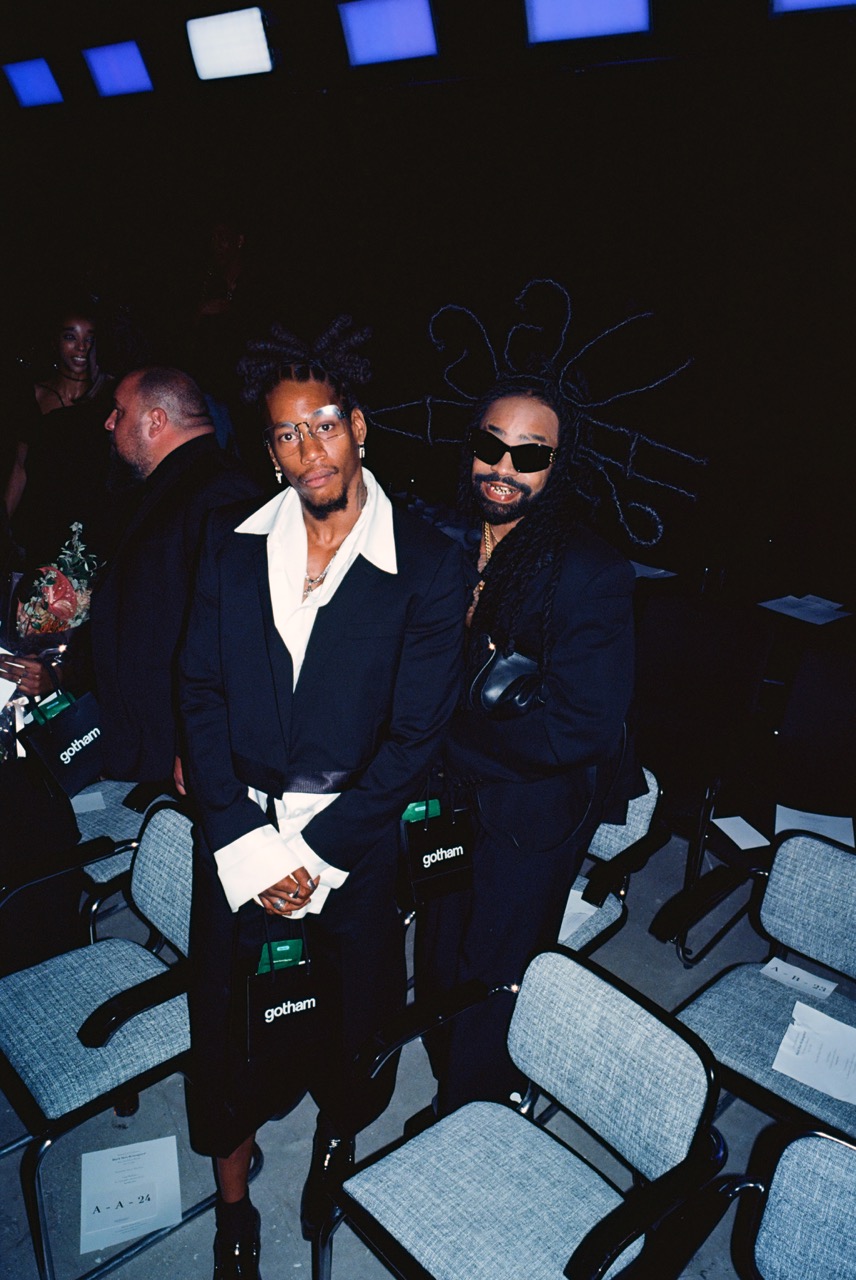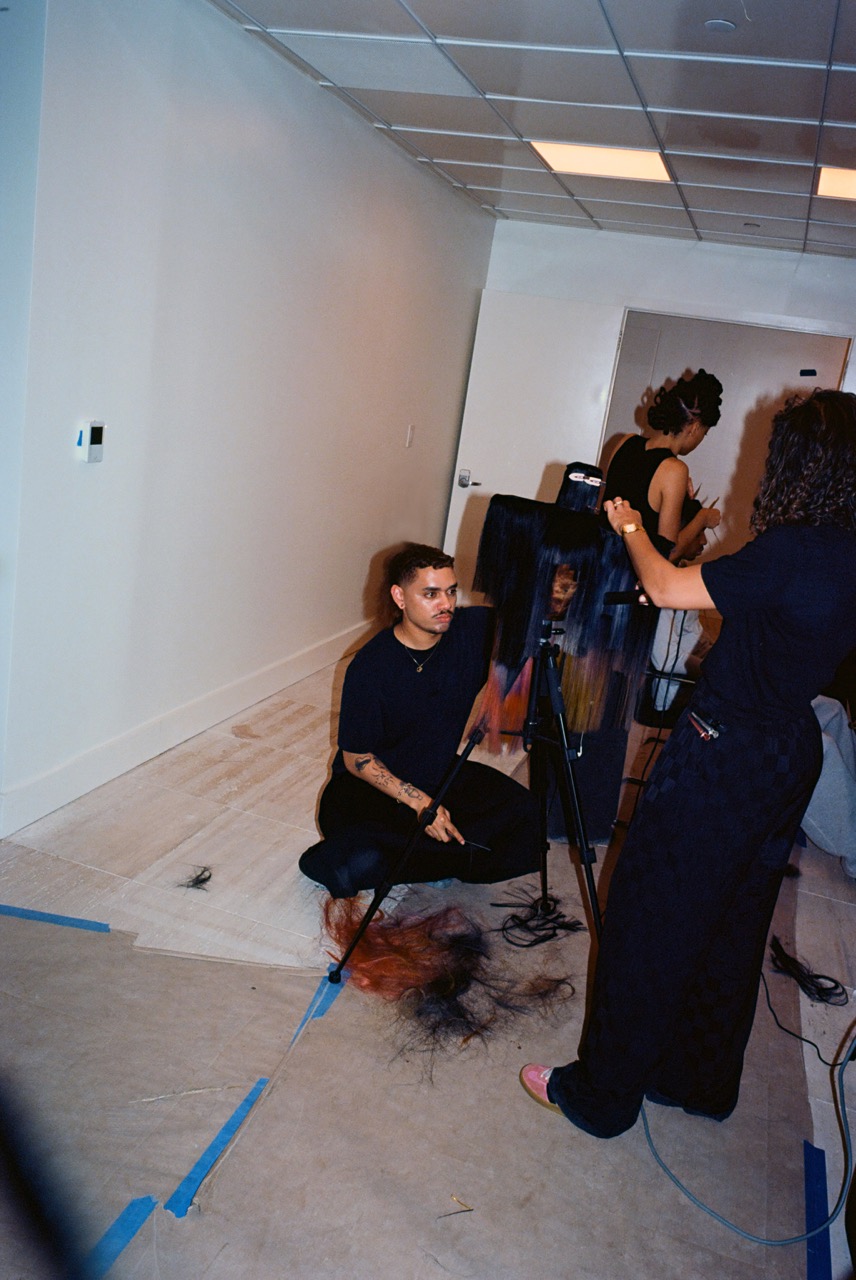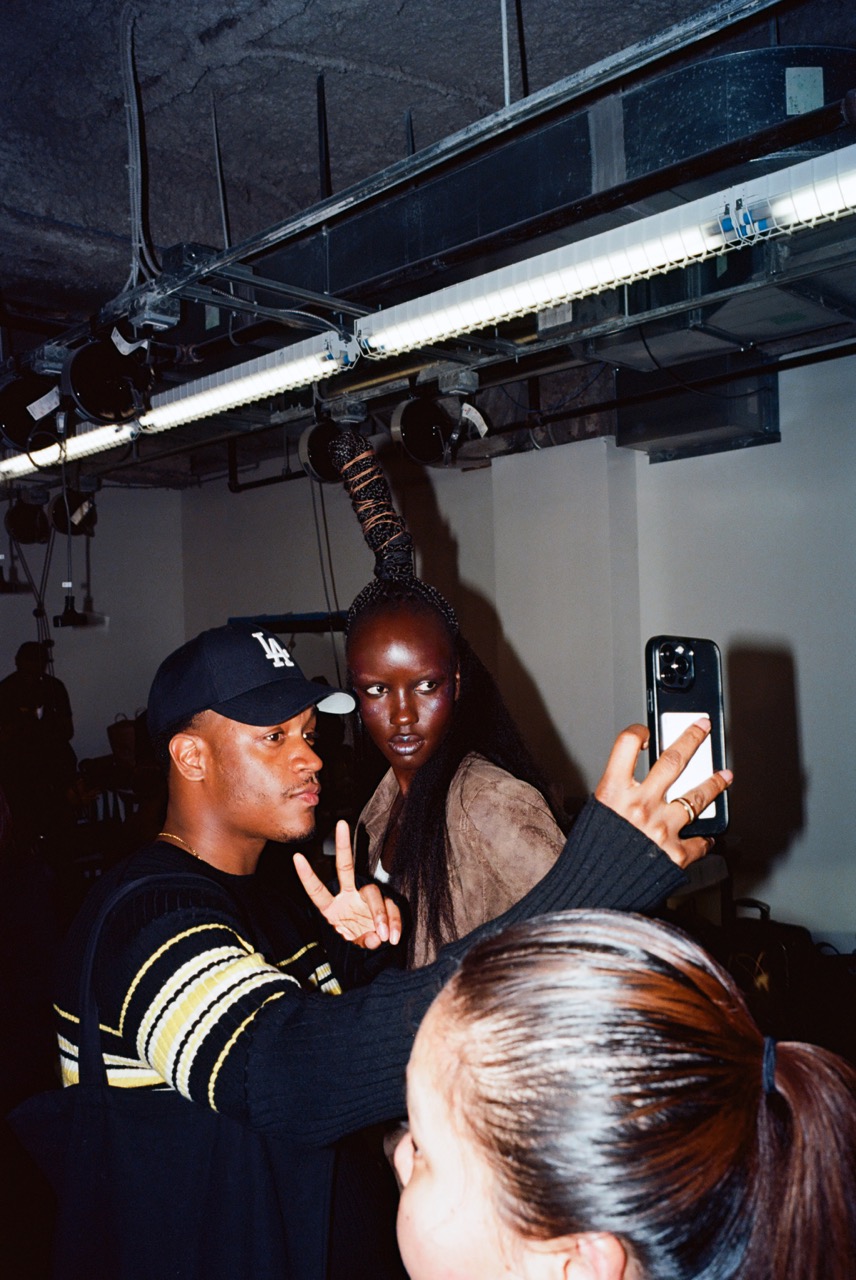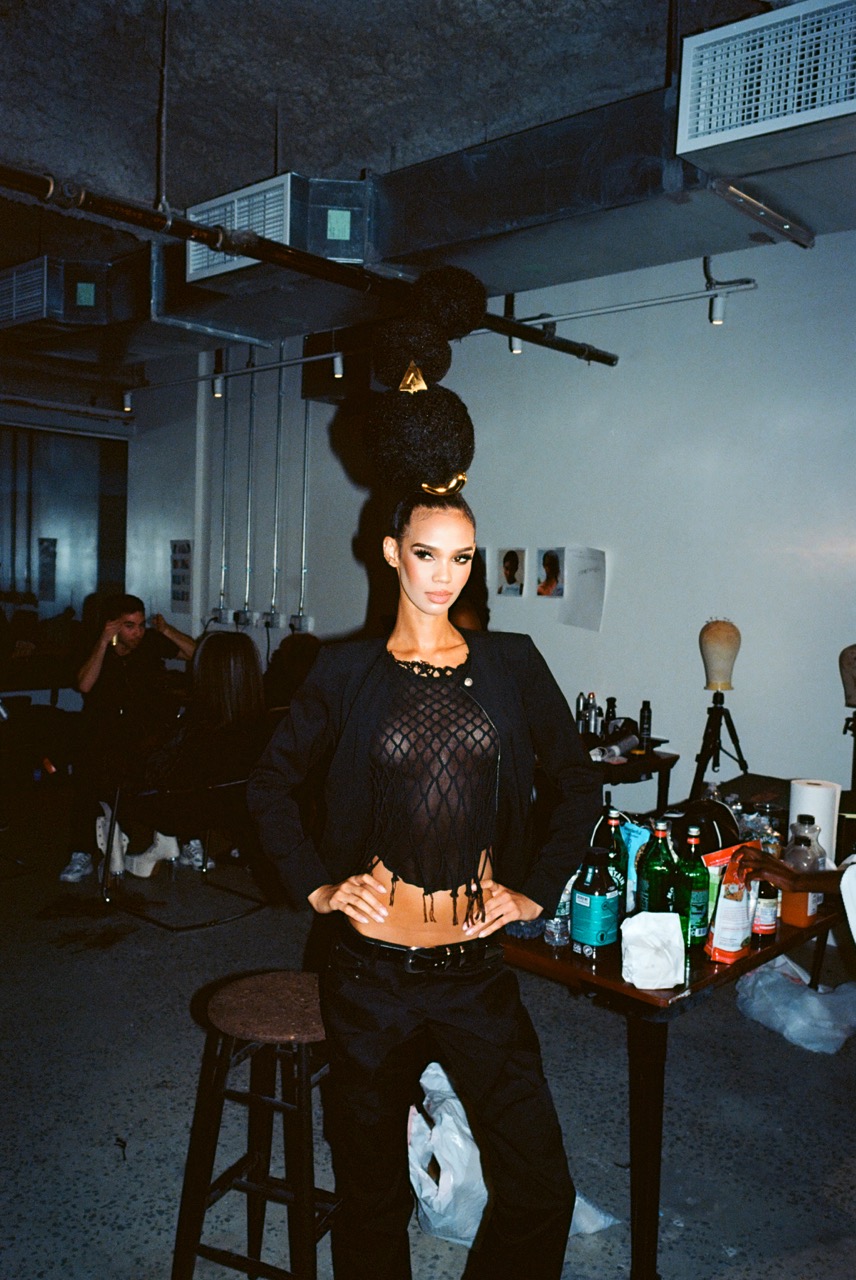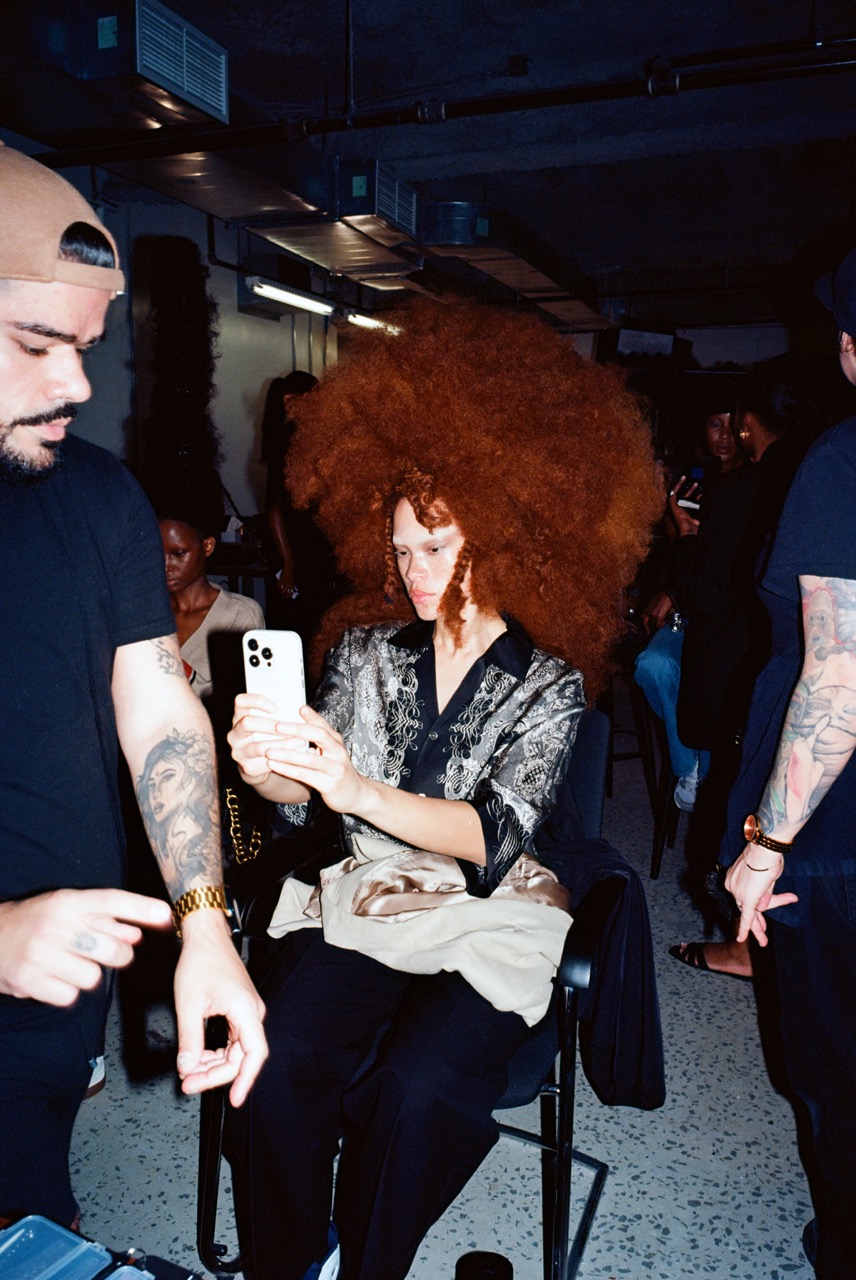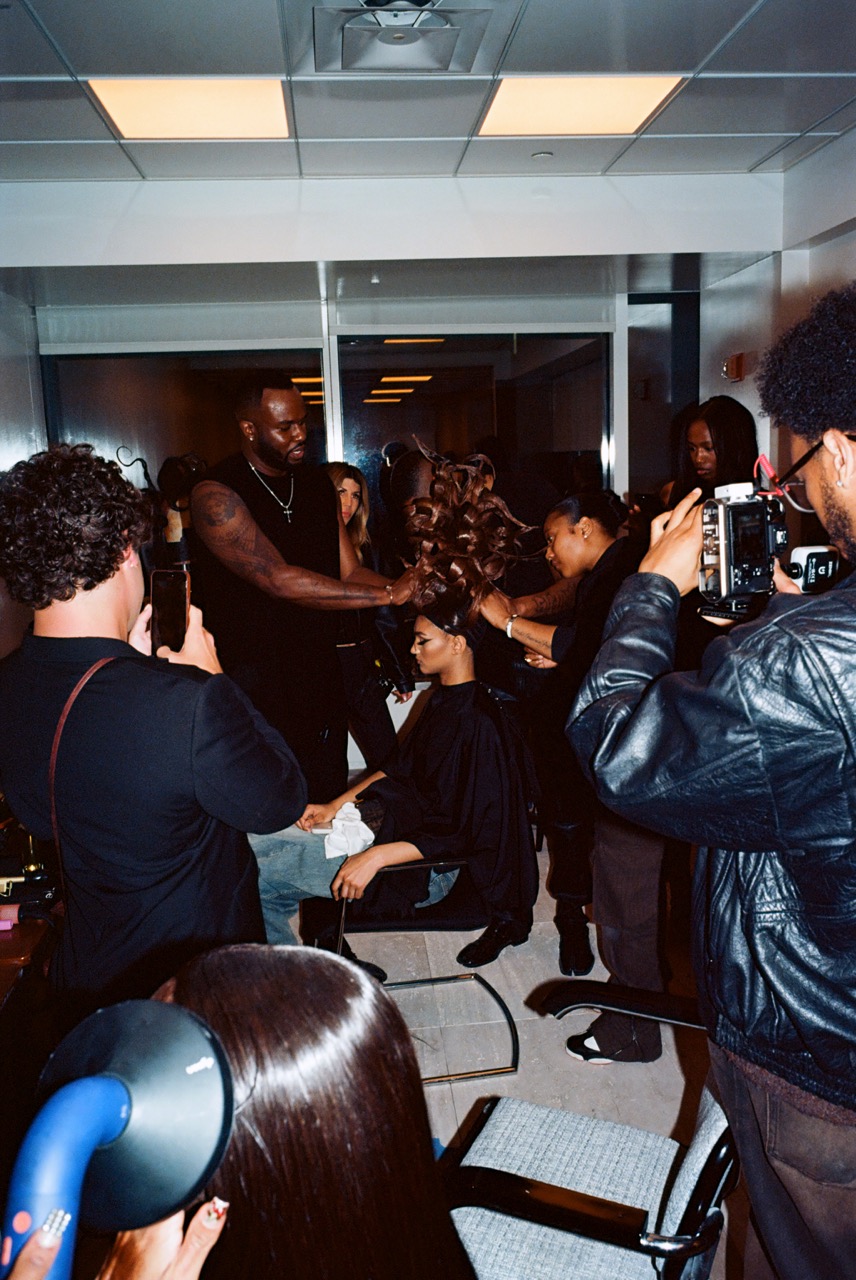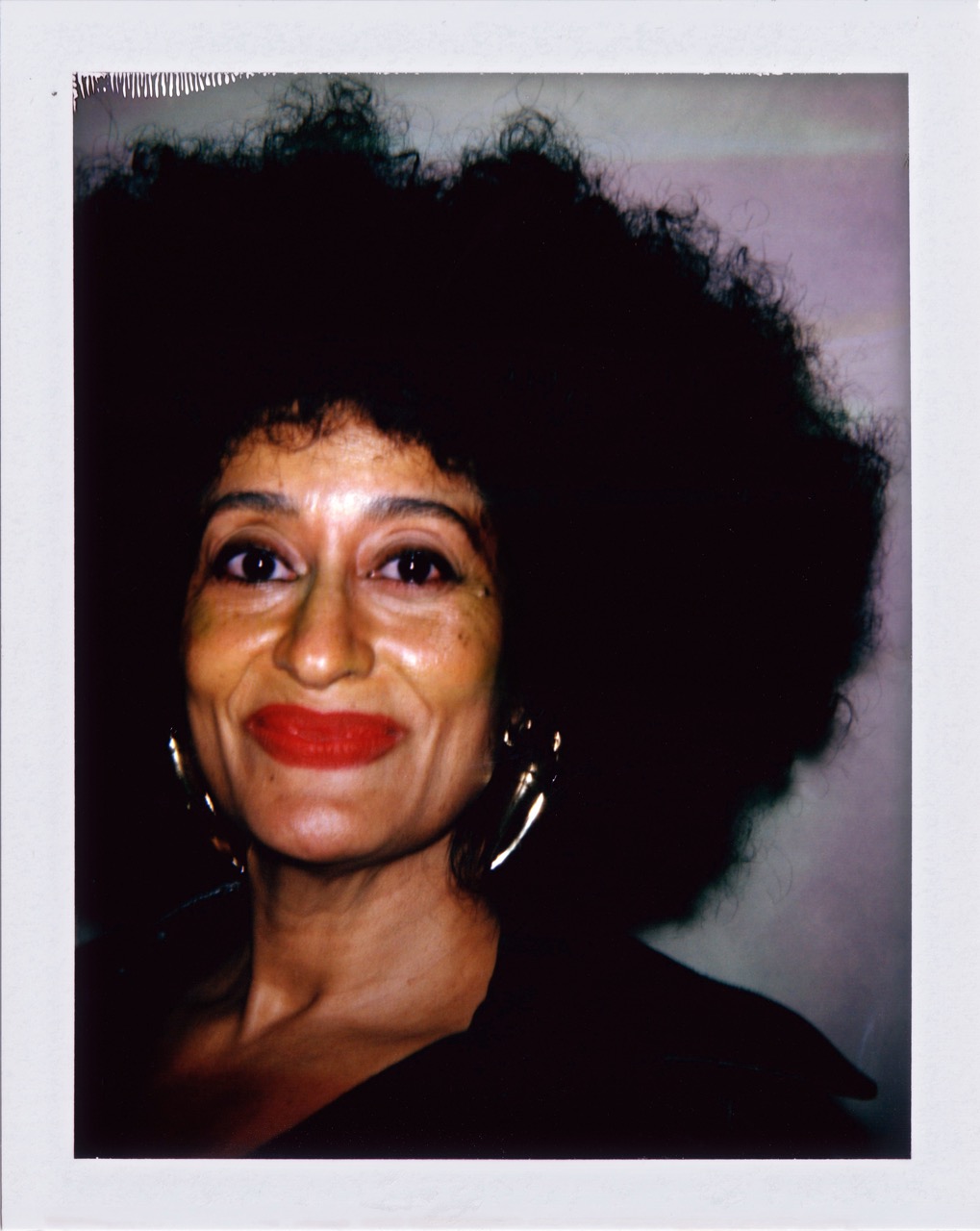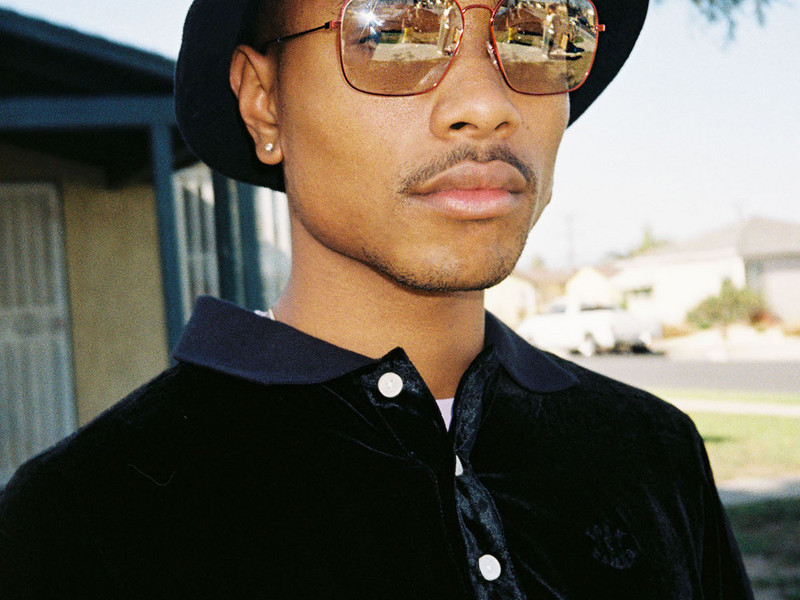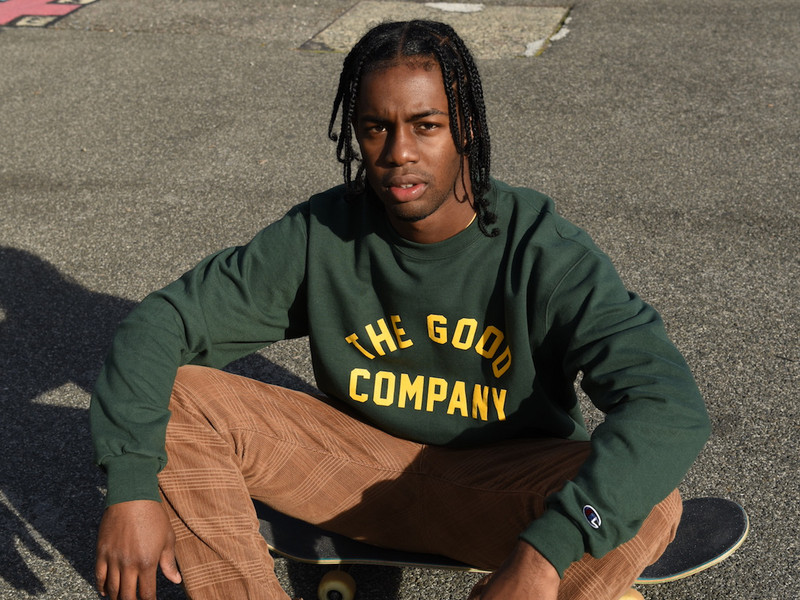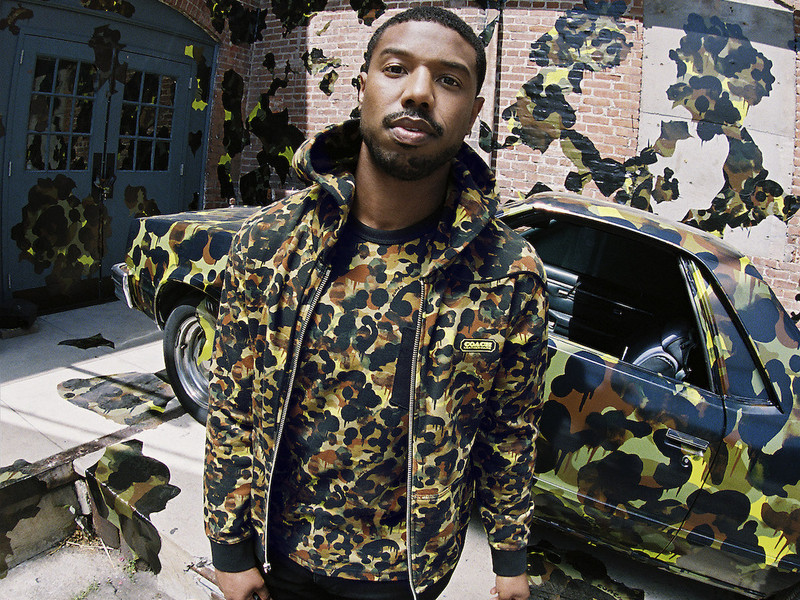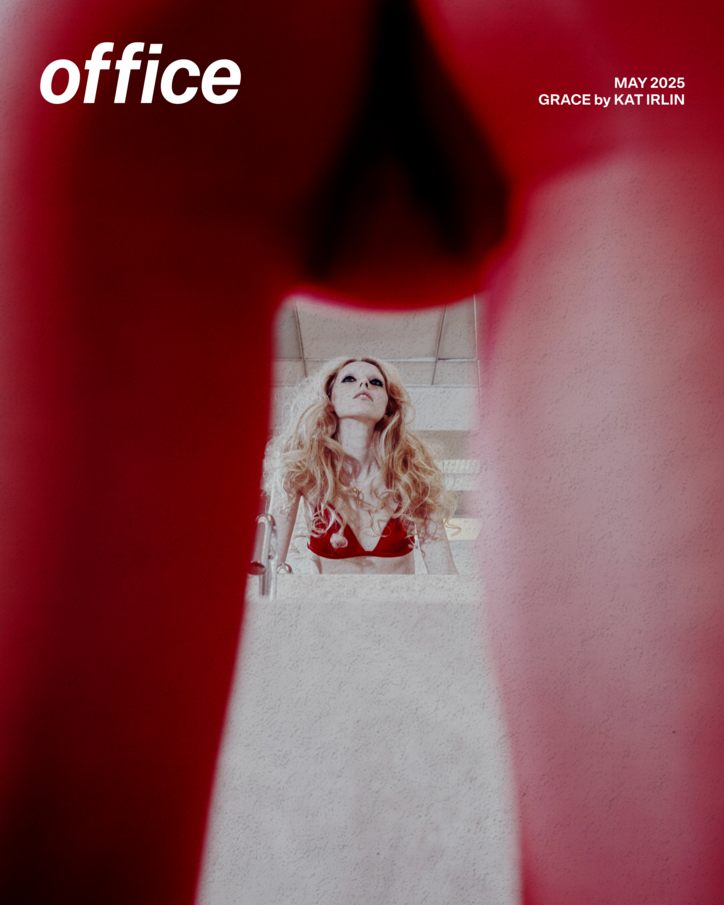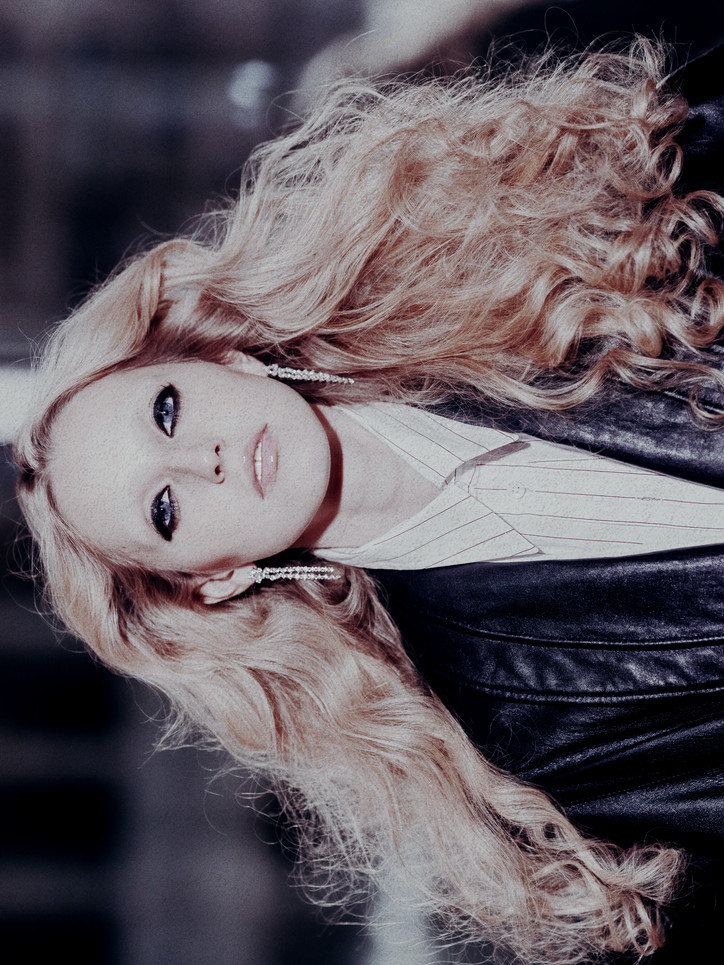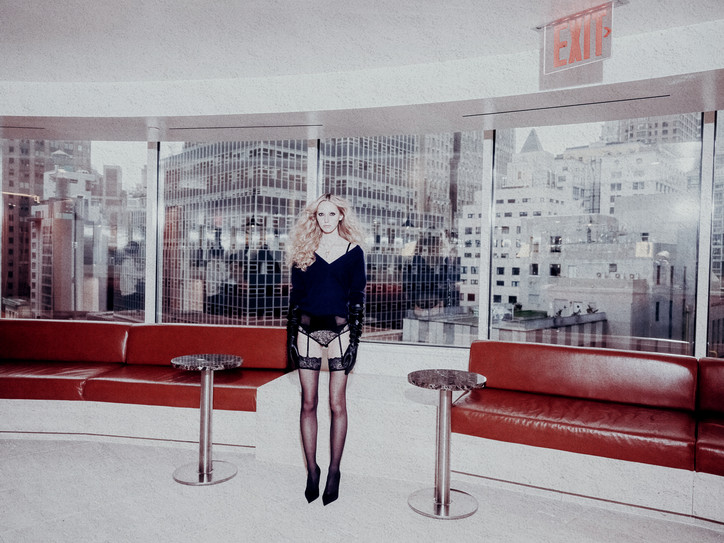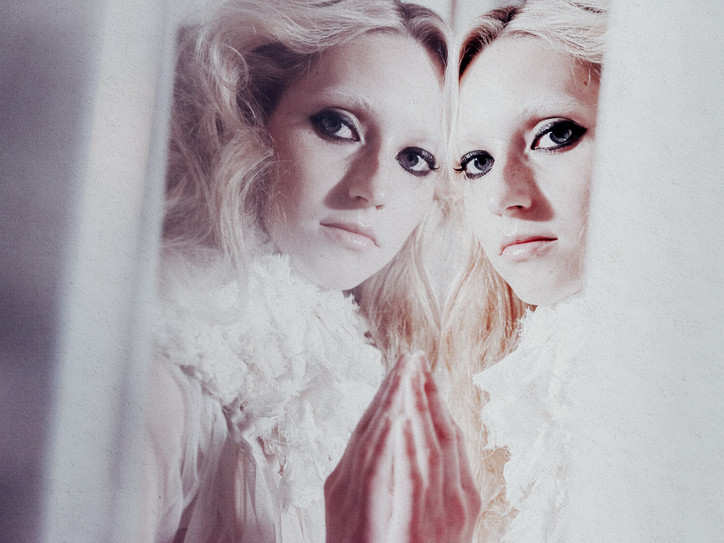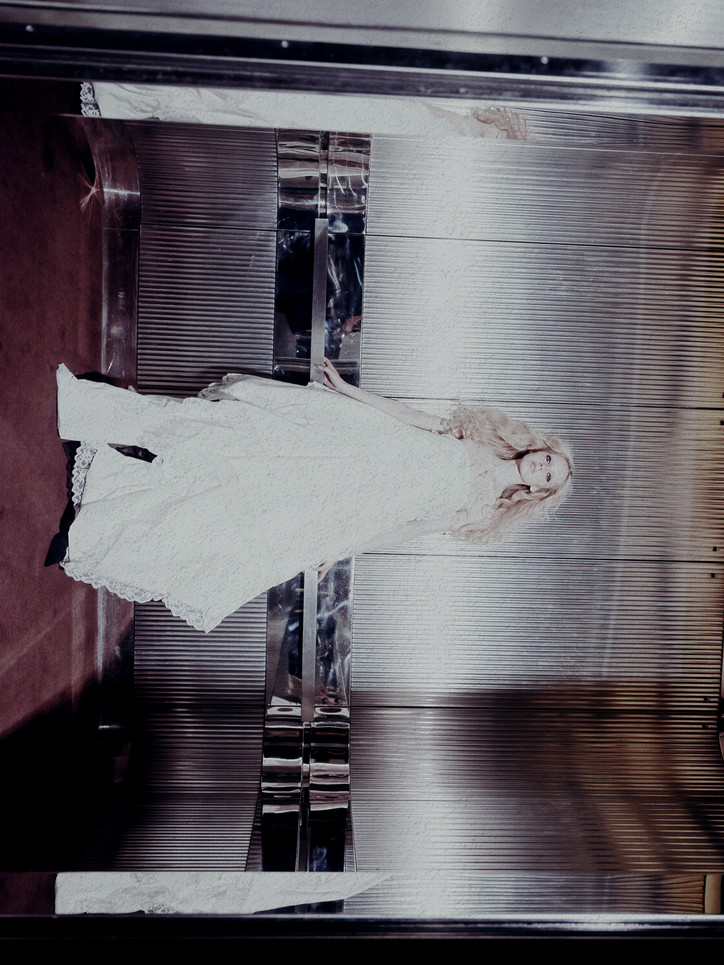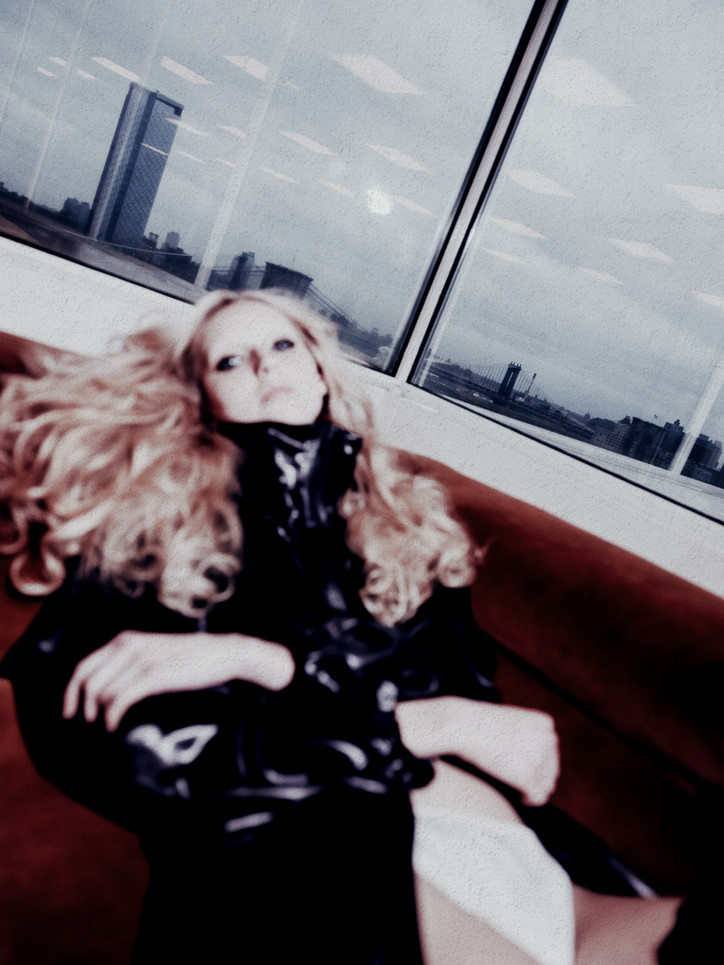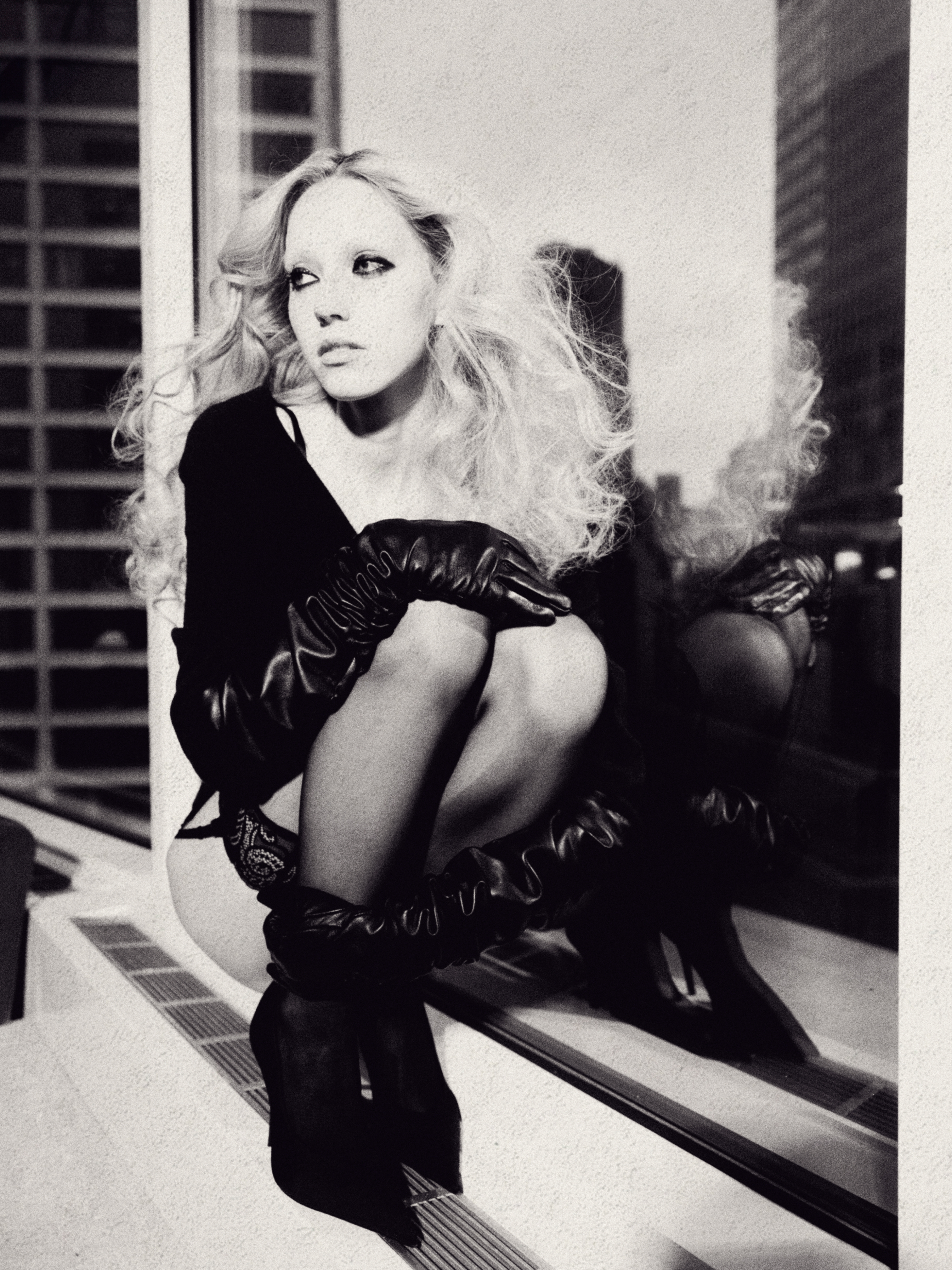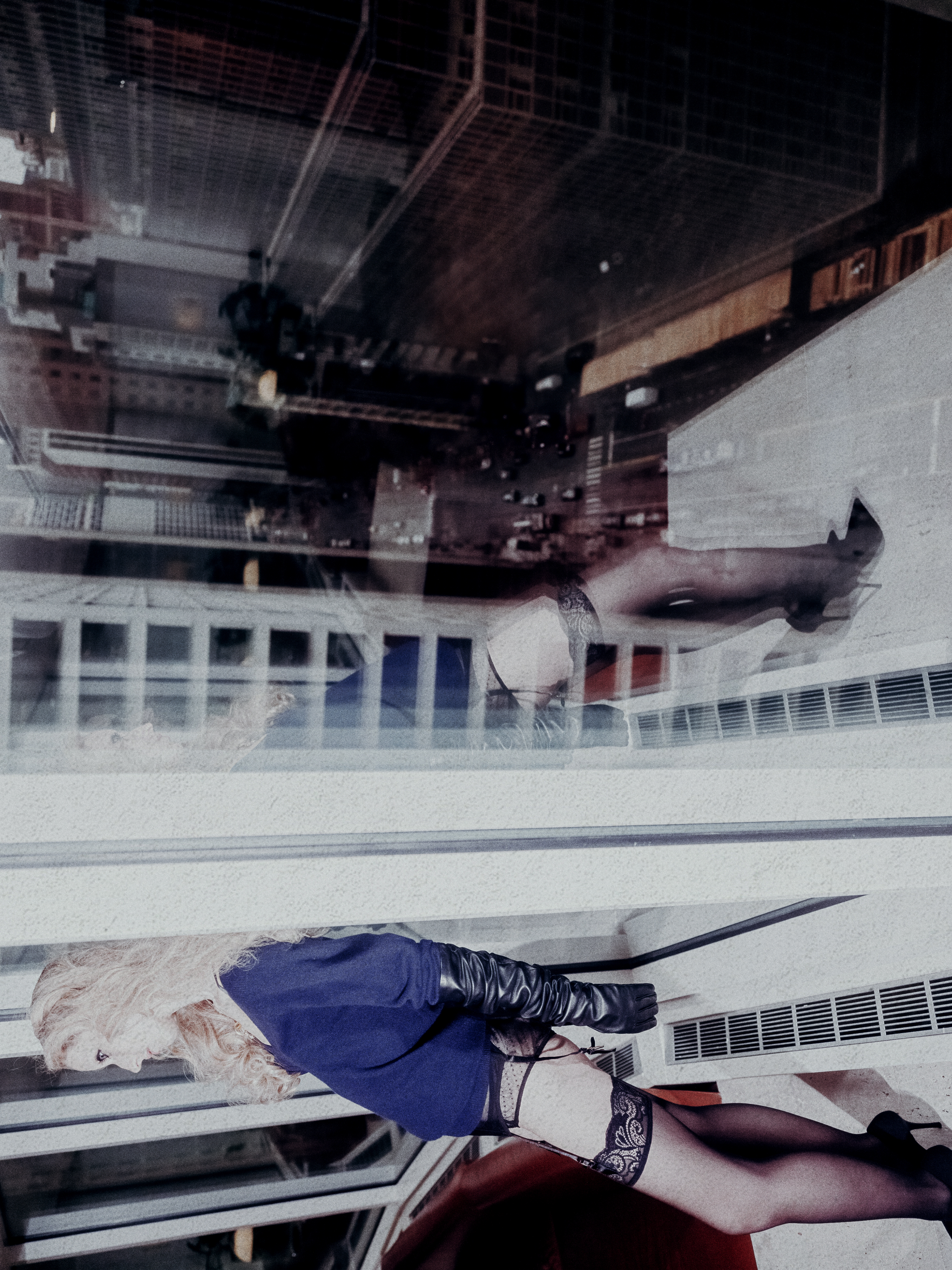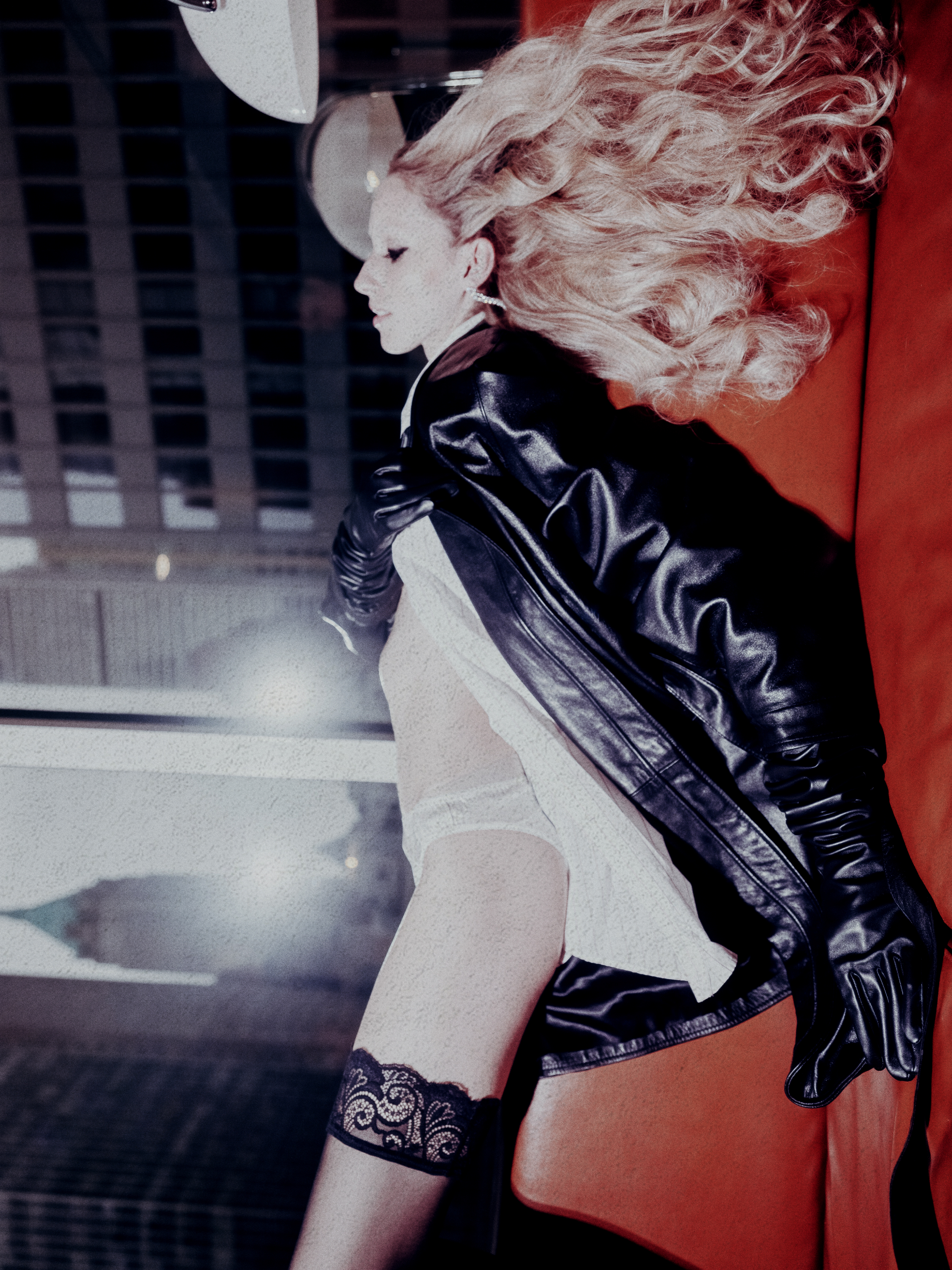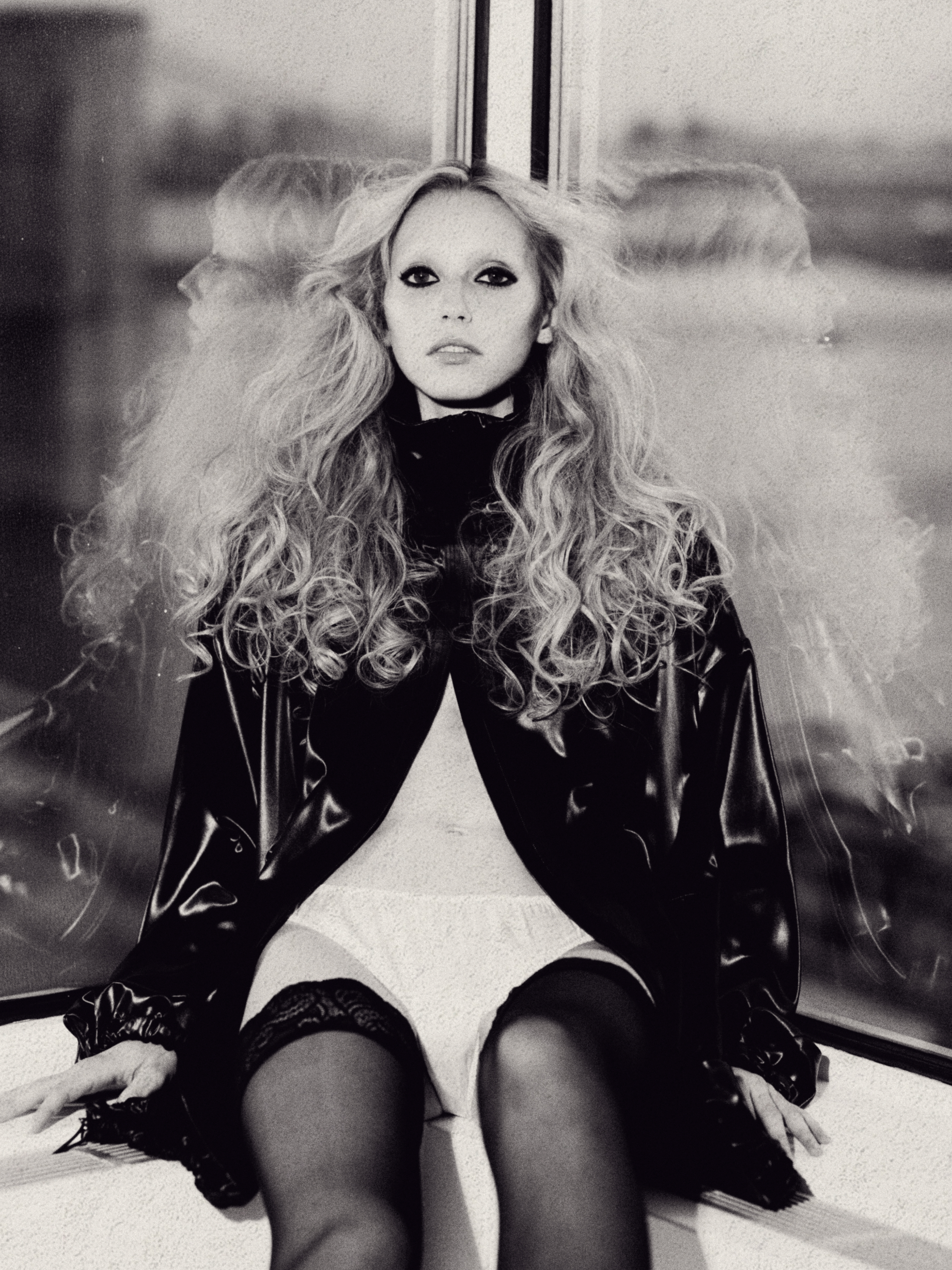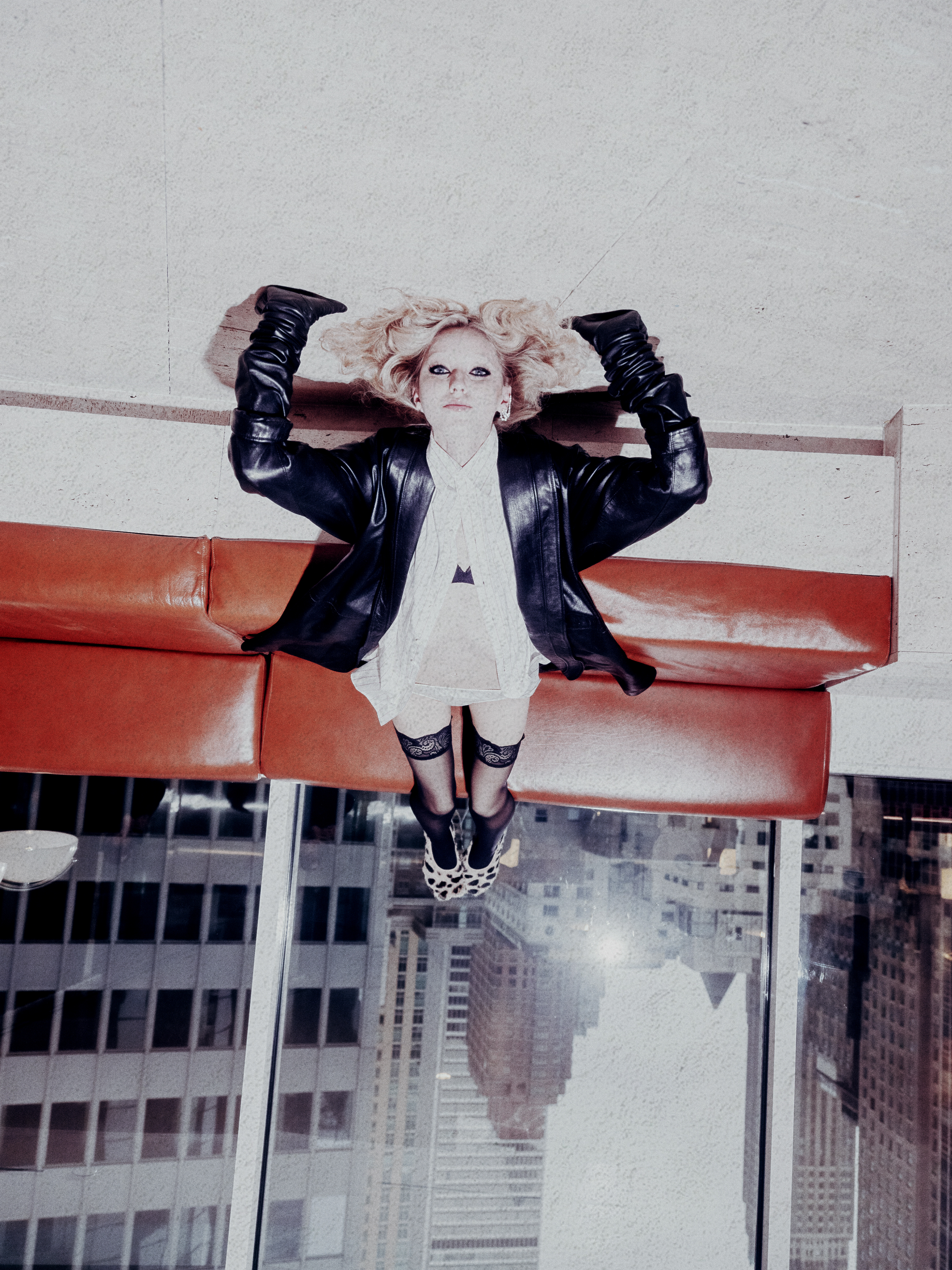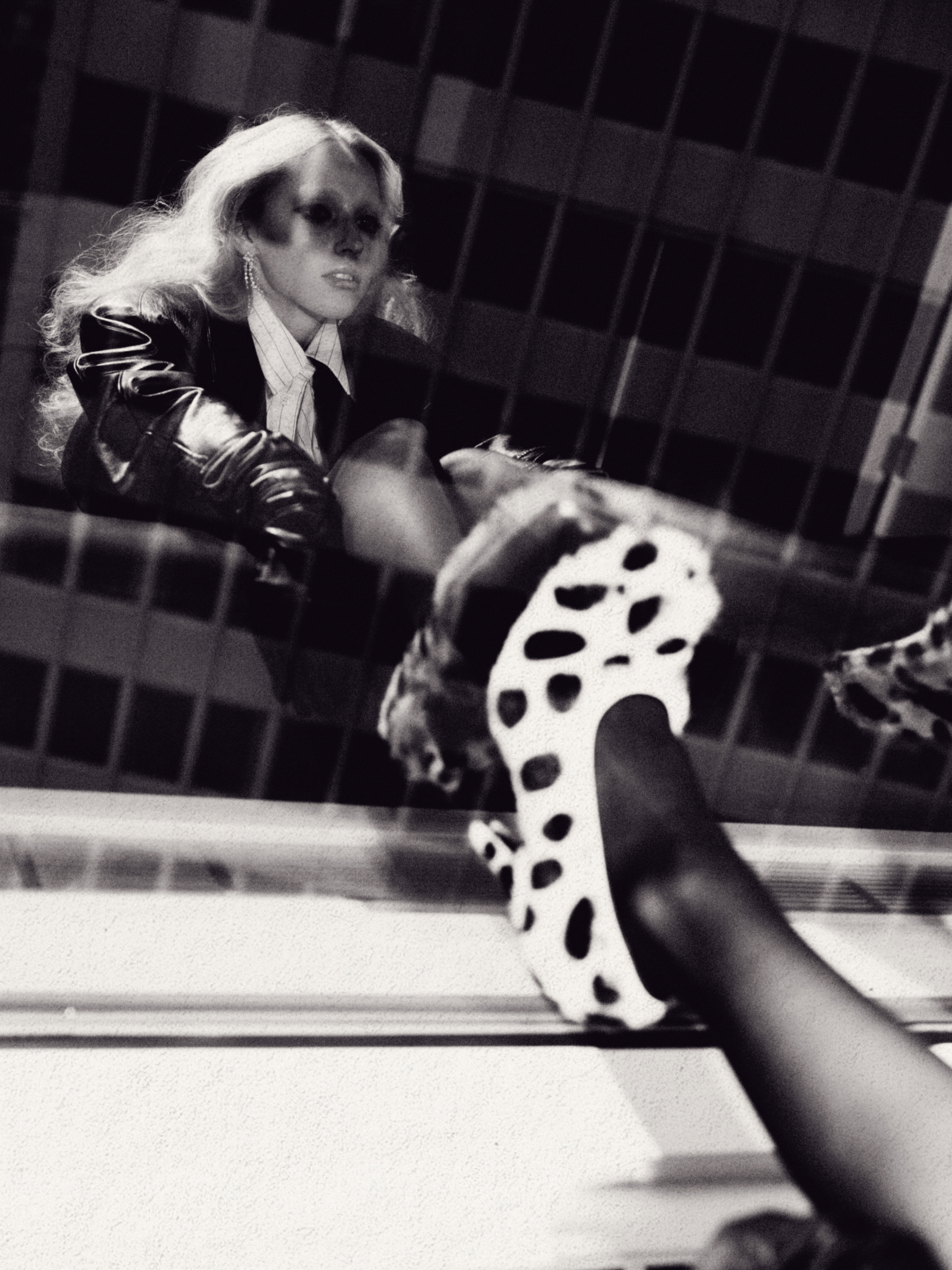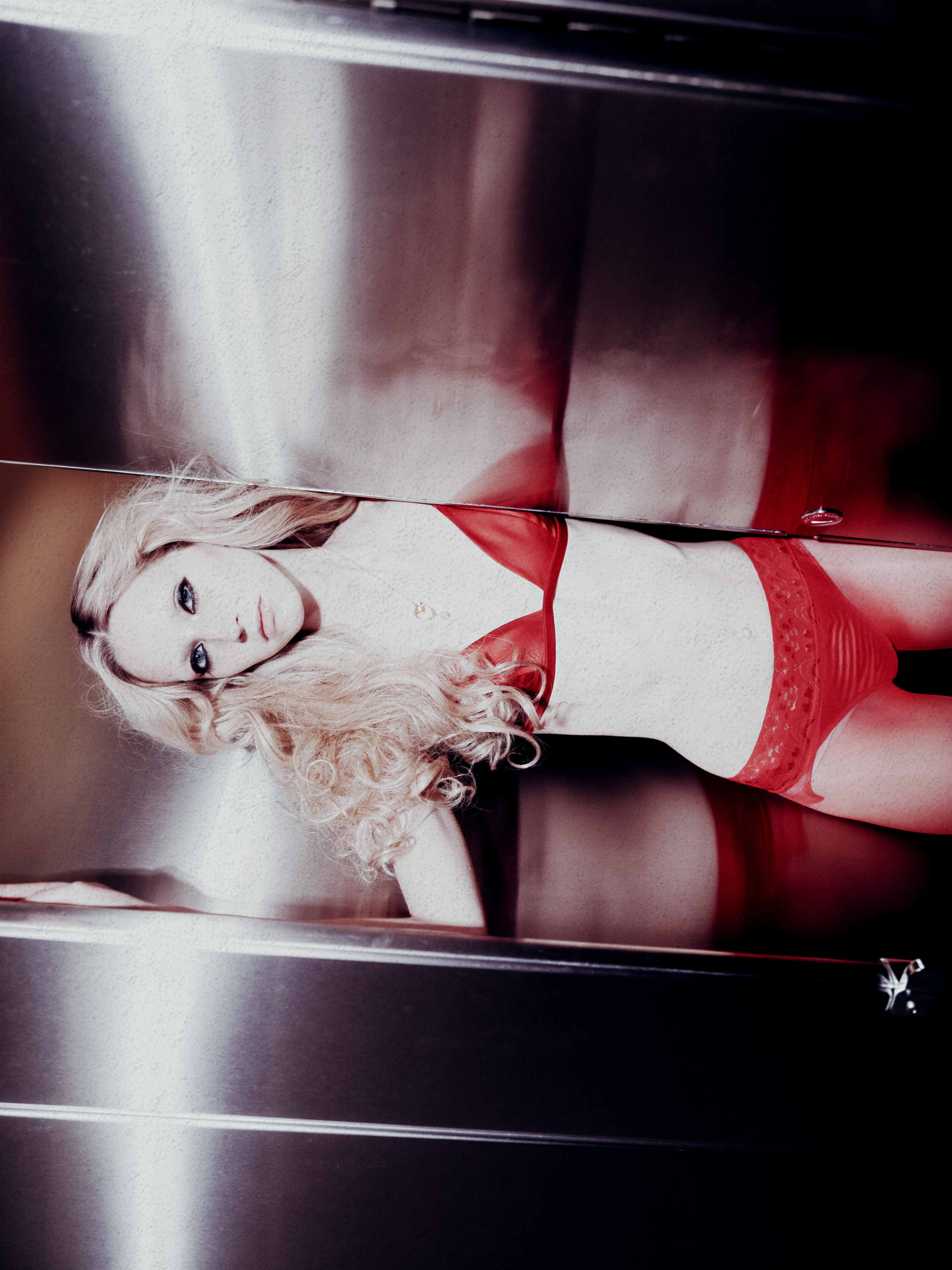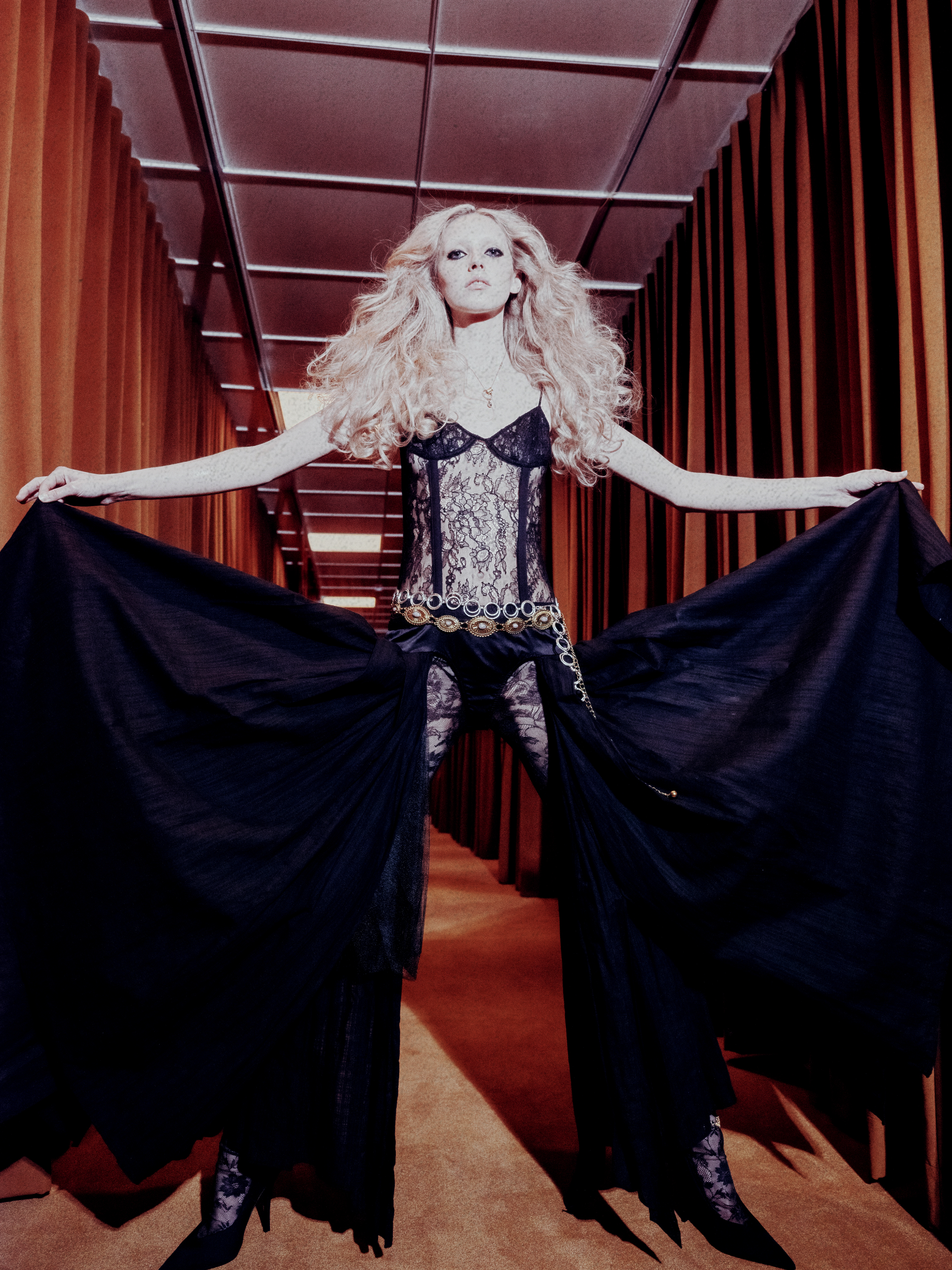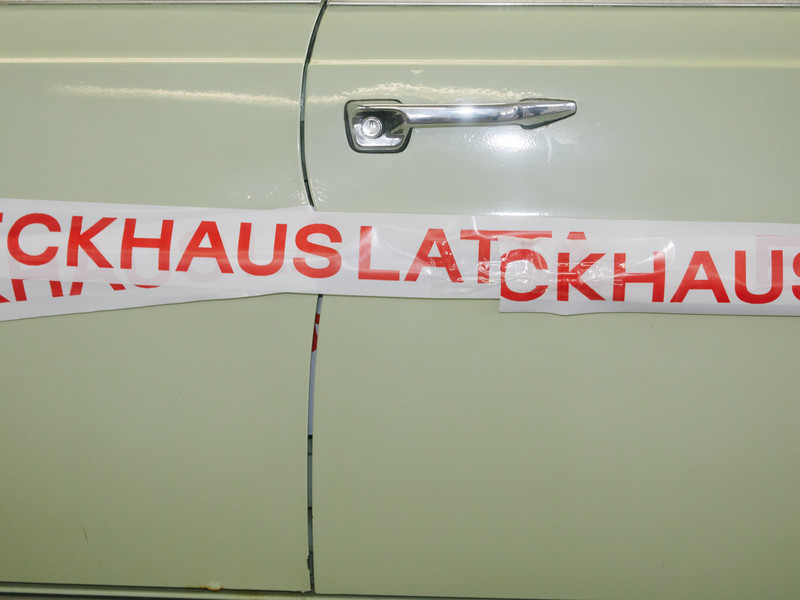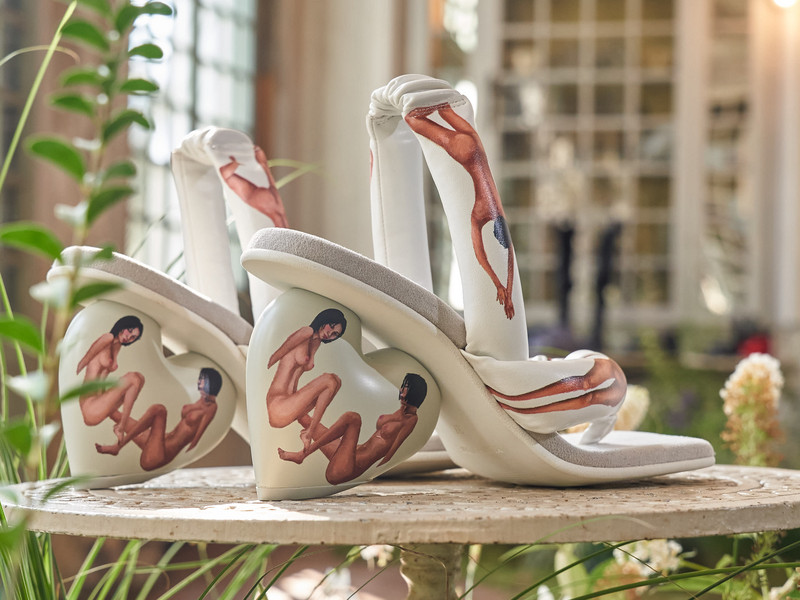Clothing the Creature: Creature World x Advisry Collection
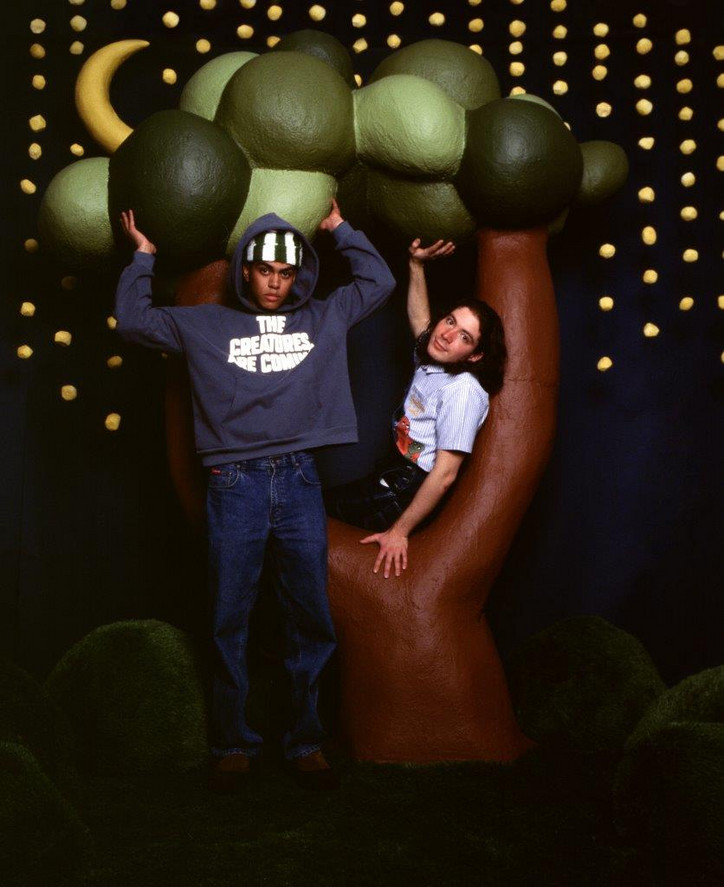
On a rooftop in New York City, in the summer, the two let their heads roam among the clouds, coming together to find common ground. With the warm breeze at their backs, they planted seeds that finally bore fruit today–in the middle of winter, and the latest wave of COVID–feeding our sense of curiosity and fantasy when we need it most.
Cole and Herron’s worlds first collided in 2019 shortly after both moved to New York to realize their dreams. The connective tissue of the city reunited them in 2020, inspiring the first fashion collaboration between Creature World and Advisry. Their visions and styles seamlessly aligned to unleash the dreamy, playful spirit of the Creature through the welcoming medium of Advisry apparel. The two set the Creature free to explore the world and beyond its canvas, bringing pieces of the divine humanity it represents to each person it adorns– together making a new, glittering universe.
In their first collection, of more to come, each of the twelve limited edition garments –from the embroidered workshirt, thermal sweater, knit vest and more– contains a conversation. First, between Cole and Herron, whose shared creativity comes through in each stitch, thread, and fabric; then, between the wearer and their world.
Shop the limited edition collection at www.creature.market and take a peek into their world in our exclusive interview below.
So how did the two of you meet and get started on this project?
KEITH HERRON— Danny and I met on a shoot on a video shoot that we were both doing like cameos for Spencer. Spencer's automatic video years ago. Yeah, I think 2018. We were just all kickin it. It was a fun day. It was when I got an offer to do ComplexCon. I thought it was kind of weird positioning for my brand. And given that it's Complex, a lot of people do collaborations, so I thought the best way to go about it would be to do a collaboration. I thought Danny would be the perfect person to do that with.
DANNY COLE—It’s funny Keith just said we met at the Spencer shoot. I truthfully would not have even remembered that because in the chaos of New York, and just constantly being on the move, and making things the world places you around a lot of people and there are some people where, in that chaos, you find them still positioned next to you. And Keith really quickly became one of those people for me where no matter what else was moving around, I would look and I'd see him and I was like “I know. I know you.” So the more time that we spent together, it just became clear that he was a person that I was really lucky to be able to call a friend and a person that I was really grateful to be able to observe as a creative.
How have you been influenced by each other’s work?
DC— I’m really, like, really just blown away by [Keith], and so appreciative because I understand that what we made is something that is not made simply by hard work. It is made with care and nurture. It is something that is handled very, very delicately, no matter how hard the work is at the same time. So to be able to come with such power and determination and still have every expression of that be so delicate. I just am very touched and it is something that I've never seen somebody be able to do you know how I feel Keith does. My first thought is always like do I deserve this? You know, but because it really inspires me, to be delicate in the world and to approach others in this delicate manner and I'm just like, I'm very, very, very impacted by you.
KH— Appreciate you saying that. You already know this is a community. This wouldn’t have happened without you, so…
DC— It’s together. It happens together. I'm not a person that comes from a background in fashion. I really grew up wearing, for the most part, my dad's clothes or a lot of clothes of mine were hand-me-downs from my cousins and that's not to say that I haven't bought clothes too. But not necessarily so intentionally. But I was born with a very, very limited sense of smell and as a result, that affects your sense of taste. So my understanding of food for a very long time was like this is a means of survival. And after linking up with some chefs that I became very close friends with, one thing that became very clear to me was that flavor is not just when you're actually tasting. Flavor is something we experience as part of a collective experience, and in the same way when it comes to clothes. Keith brought me to a point of understanding that the garments that we have on our bodies are not only these communicators, these means of expression, but they also really, really define the way that we feel and it is this art that we get to carry with us.
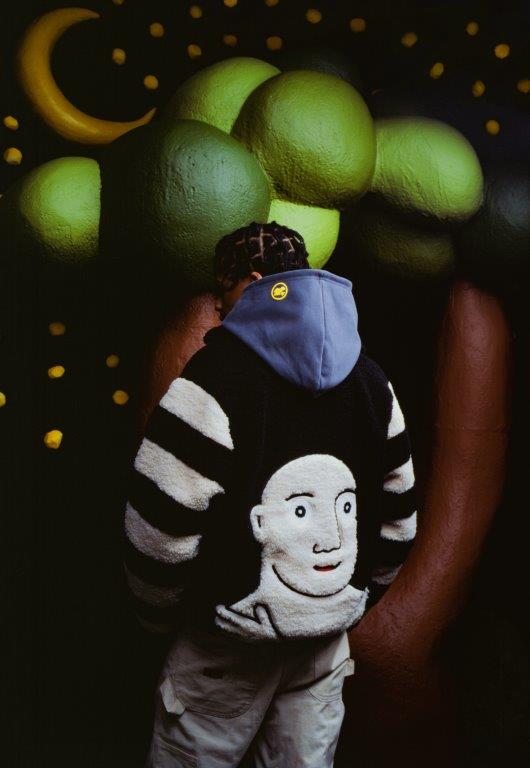
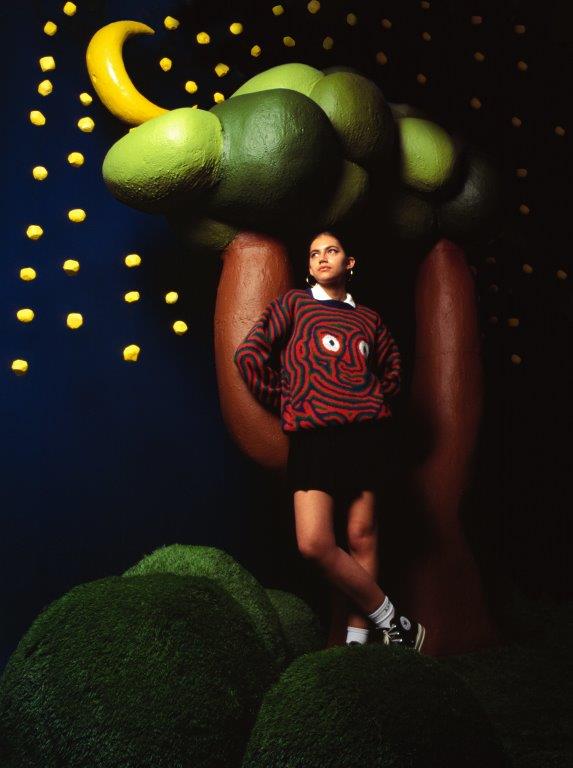
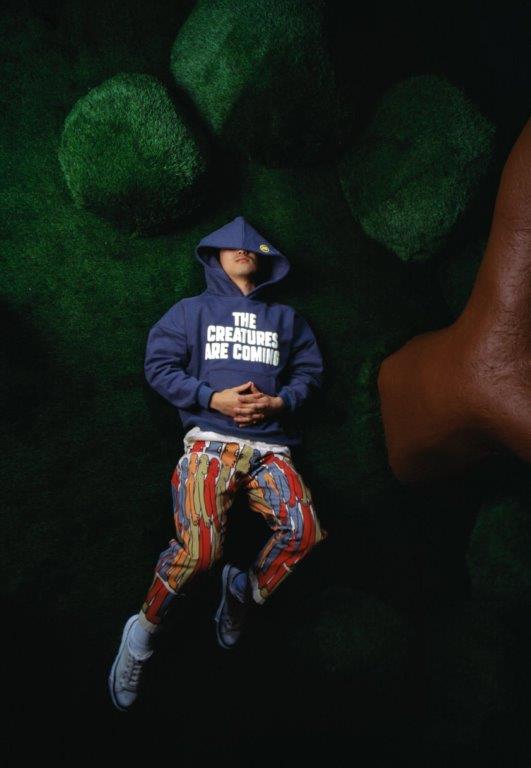
I didn’t realize you had a limited sense of taste, but I wanted to talk about sensory world-building and using touch, and tactile senses to create an experience.
KH—As far as textures it was probably the most important aspect of the design process. Other than, like coming up with the ideation. The texture itself was, in my opinion, what sets these pieces apart from other pieces that I've made, personally. For our knit sweater, we went through three different samples of different gauges to make sure it was thick enough and that the yarn was thick enough. And the actual GSM, the weight, was also heavy enough to be worn in winter. So we have that one and then we also have the fleece jacket. Which texture was a huge part of that one because we did paneling with different fleece panels cut out into the shape of the creature and then sewn together because we wanted it to feel like a textured 3D creature. We also have the crochet beanie that was literally held together by the weight of the texture and those are all handmade. The work shirt has the texture chain stitch embroidery, which is another huge aspect of that piece. Rather than just being like a flat 2D piece.
DC— There's definitely a component of when you are purchasing a clothing line article of clothing. You are not only purchasing the garment but you're purchasing how you feel. The way that I feel going about my day is the difference between feeling like I am unstoppable and ready to face the world and I feel like a slob and weak. I have my own relationship with textures in terms of how carefully I focus on that in visual artwork, and how much of a point I make of the importance of textures. I think to me, a really good texture is one that is not going to jump out at you, but rather is going to be experienced by you.
KH—A perfect example of what Danny is referring to is the hoodie we made. I feel like the hoodie we made is only strong because of the texture. We did like super raised puff print on the print and it would otherwise probably be a boring hoodie if it didn't have that texture on the graphic. I like to say that everything is in the details and the details have the opportunity to be the meat of a piece.
DC—It’s funny for me, to almost be an observer of Keith’s passion for sharing details. Oftentimes, I opt to keep these details to myself. Because to me, a lot of these details are ones that I think will be experienced, whether a participator or consumer is aware. The details will be experienced, regardless of whether they are noticed or not, regardless of whether they are consciously acknowledged or not. It is what shapes how you experience art. And I like for people to understand that you don't have to notice a single one of these things to be experiencing it correctly and to have an informed opinion that this feels good. Because we focused on all of these details behind the scenes, so you don't have to think about it. So when you put it on, you can just be like” this feels right.” And then ask yourself well, what does this feeling mean to me? You know, what can I do with this feeling? You know if I feel good today what can I do with this?
So what do you hope people will feel when they put on your clothes?
DC— For me, it comes down to what’s wearable and what’s more of an accent piece. Like, with the thermal sweater, which is this red, blue, and green echoing of waves around a creature with its eyes wide open. In a piece like that, you are radiating in a piece like that. It feels like anything that you say is contagious because you are popping out as a piece of art as a result of how you have decorated your skin. And then the stuff that I would call more wearable, which I know is a blurred line because what is wearable to one, might not be to another, but to me, I can actually wear that workwear short shirt as a part of my uniform. And it is while it still does have a pop to it. In the fact that you genuinely have art on your body. It still does have the bones of something that people are used to understanding as an everyday garment. So, to me, that is sort of this phenomenal bridge of dressing as we human beings– as we as a species, and as a culture dress, but we’re carrying something very playful into it.
KH— The one central motif I had going into the design process was play, and that is clearly seen in a variety of pieces. And on the other hand, it was also a utility because we have pieces that are there I guess for the purpose of being worn every day, or serving a good utility to someone's life, like the denim jean jacket and the denim pants. They're just very simple staple pieces that we wanted to design for everyday utility, but we also have the stripes and colorful characters and all of those are play.
That really comes across. Did you start the collection with the intention of exploring those themes or, how did you establish them?
DC— In an ideal world, I’d remember where my initial sketchbook is from the first day we came together. I don’t know if you remember, Keith, I’m sure that you do, when we first came together on my roof to figure out what we wanted this collection to be. I feel very strongly that if you're going to do something as a collaboration, it's important to make something that one party could not make alone. You know, to come together and really say “ what can we only make if we’re together” because that's what makes it worth doing together. We outlined this whole map and Venn diagram of “what is Advisry?” “what is the Creature World?” which was the foundation for the whole common ground that became this collection. I'm like looking around real quick to see–Where could this book be?
[Pacing through the apartment, rummaging through loose papers, paintbrushes, and the Advisry x Creature World work shirt, previously pulled out as a point of reference bridging ideas and its manifestation]
DC— It really is something that we started with and internalized, and never really had to look back to but it I think it was a contributor so much to like, why this collection feels so true to creature world and also so true Advisry and it's a great example of like this needed to happen together or it wouldn't be this.
Well, I’m definitely interested in the new space you created together. I feel like Creature World and Advisry both have such distinct worlds– one as, like, a space of imagination and a dream landscape and the other reimagining historical, and cultural points of recognition. So how did the two come together?
KH— I think it was mostly in the design language of Advisry told in the perspective of the Creature World is probably the best way to sum that up.
DC— It’s so funny to hear that as your direction, because to me, it’s super compatible. I’m looking at what the actual creative message is, not the design language, but the creative message and I see that it's the creative message of Creature World told through the language of design.
DC— [still now, and turning to the camera with a smile] Okay I have, like, two film photos where together you can make up the image. You can see on the Advisry side Keith saw the Advisry as being about Black Pride. It’s nostalgic, and it’s driven by love. I saw Creature World where it’s natural, it’s magical, it’s surreal and that it’s a place of play. Then, together, we found our common ground. What we saw that there was common ground in that area was this divinity of self and divine view of the universe, so we saw it as universal being part of our common ground. Love, imagination, play– these were the things that we united on in terms of this shared identity. And lastly, empathy and community.
So, at the center of our Venn Diagram, we found that blue circled box where it says, divinity of self and of the universe. So universal, timeless focus on nostalgia, love imagination, play, empathy, and community where our shared identity, and looking back on it now, that’s what we made. It’s really cool to look back and think that we did it.
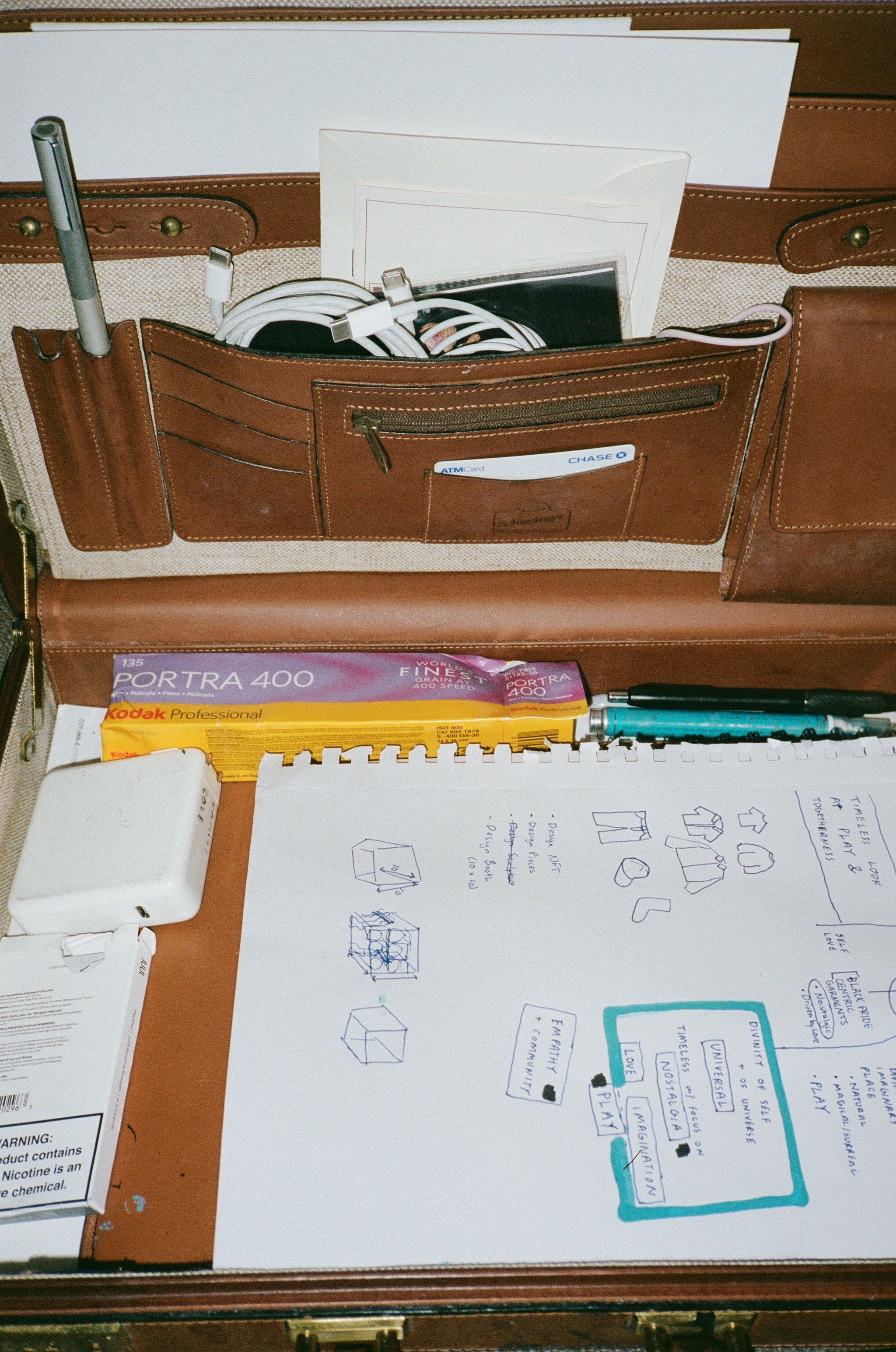

Divinity of self and the universe is really interesting in the context of fashion, because, how do you create pieces that both make people stand out and unite them?
DC— I think it comes down to timeless nostalgia. Throughout every phase of trends in the world we see that what human beings go through, is constant. The constant is us, so this was really about encapsulating all of the waves that are occurring in the world, the Hive migrations, and asking, well, who are we? It really invokes the question of, “how can we make something timeless, that has never been done before, which can immediately invoke a feeling of nostalgia?”
The things which are successful in doing that will resonate in the same way that you look at and feel like this is something out of my childhood because it's going to be something out of your kid's childhood too because it transcends. That is not something that an individual can create out of thin air. It's something that people have the opportunity to discover to decode through observation of our experience together here in this grand miracle.
KH— I think I think it really comes down to, like, when you wear a piece, not only would it give you, yourself that feeling, but as you're like walking down the street and you're wearing this piece it also translates to others by them just looking at it and seeing the themes that we’re putting across through the clothing and like people I guess experiencing it through the person wearing it. Like we will make pieces that say “Empathy” and then it's two creatures hugging each other sitting on a cloud and you don't necessarily need to be wearing that piece to experience that. So I think that's the best way to put that.
We talked a bit about textures, but I wanted to ask as well, what kinds of silhouettes do you gravitate towards?
DC— For me, it’s something with a structure to it. it's something where the structure feels like it actually represents the shape of a body, and there are so many different body shapes. But I find that most of the time when it comes to tops that what we refer to as a cropped fit is what I'm under the impression should just be a bit like to me, I think a shirt should end at your waist. I don't understand why it goes past it. And I feel like it's almost deceptive. None of our torsos go all the way down to our crotch. Like why would a shirt go all the way down to our crotch? I genuinely, I cannot comprehend.
KH—Personally, I feel like I have a lot of different styles that I step into depending on the week or the month. So that's why Advisry itself is very eclectic in terms of different styles. But my favorite I would say overarching is crop fit, baggy, baggy bottoms, but I don't know it just depends that's just me this month.
Do the two of you ever share clothes?
[Overlapping]
KH—No…
DC— Keith does not wear my clothes–
KH—no.
DC— but I do wear Keith’s. Like, I literally live in his closet.
KH— I don’t know, I just don’t really borrow clothes or do anything like that. But if people need clothes, I’ll share.
DC— It has definitely helped me. Keith has taken clothes of mine and very carefully cut them to fit my body better, so my clothing life has definitely been impacted by Keith. Keith lives in a closet, I live in one big painting.
KH—I mean, if I can do anything that makes someone feel more confident, that’s always a great feeling. That’s why we make clothes, so people can feel good in them.
So, I have to ask– what are you wearing today, and how does it make you feel?
KH— I just woke up, so I’m in like, a plain white tee, some pajama plaid pants. You know, the beanie. Going for comfort.
DC— I mean, I’m not at my best today. We just worked, like, a 22 hour day– keeping in mind that with what we do, it doesn’t feel like work– but I was just moving for 20 hours and then I went to bed. So today I’m in a shirt that I do not care about, but that gives me the opportunity to wear a shirt I really like tomorrow. I just threw on my overalls over it, so it doesn’t really matter.
